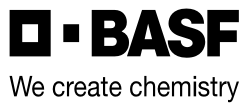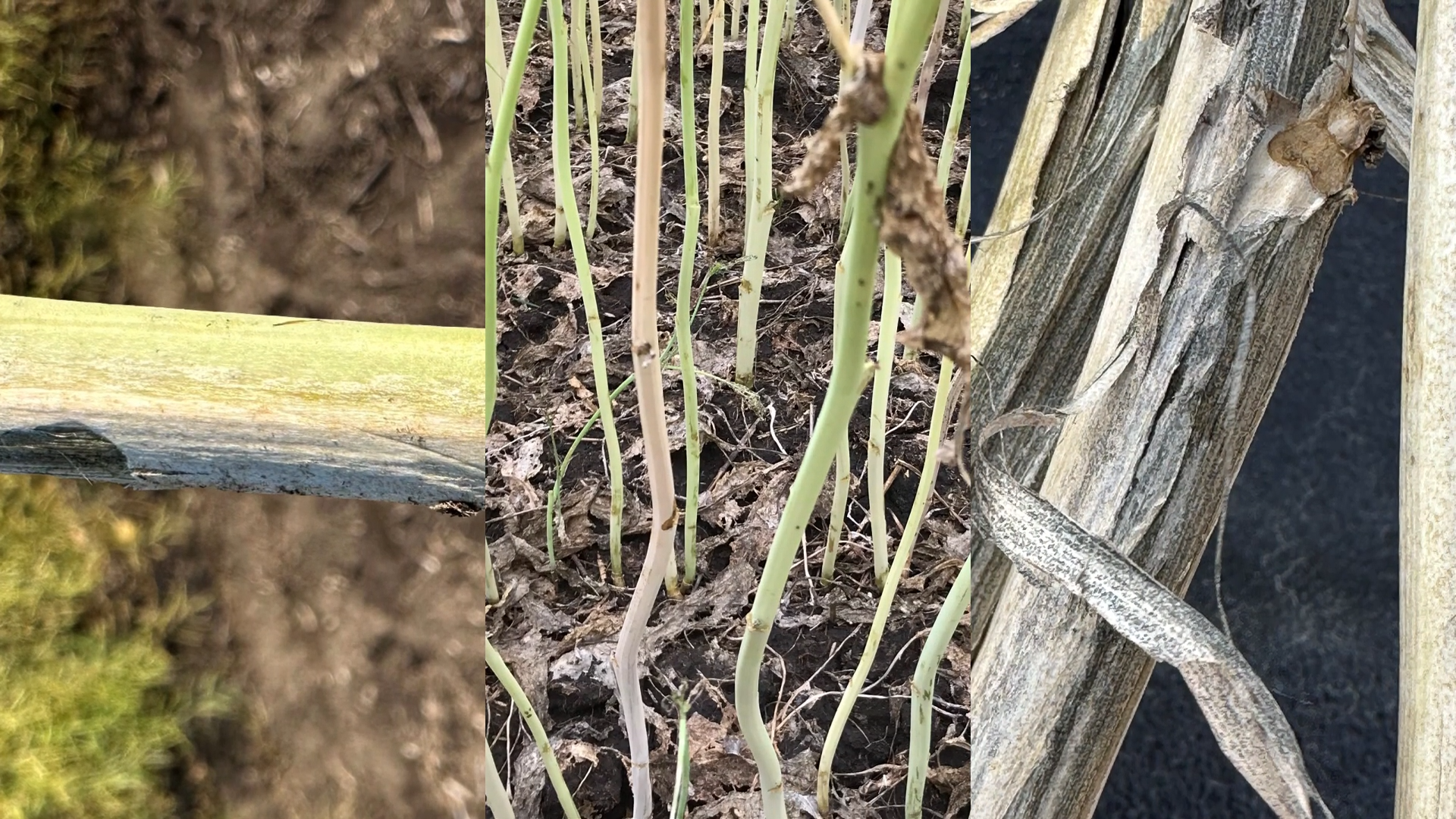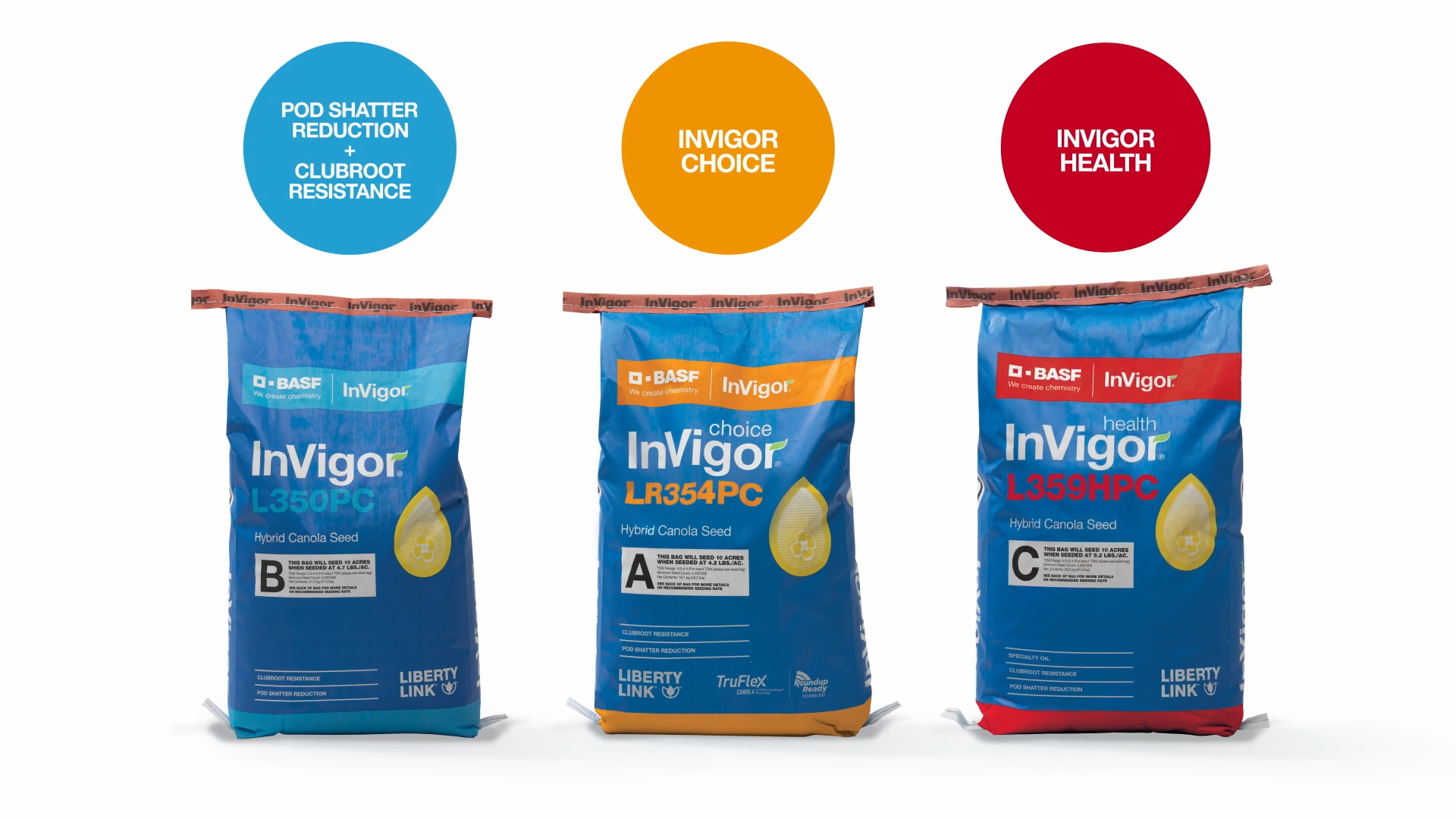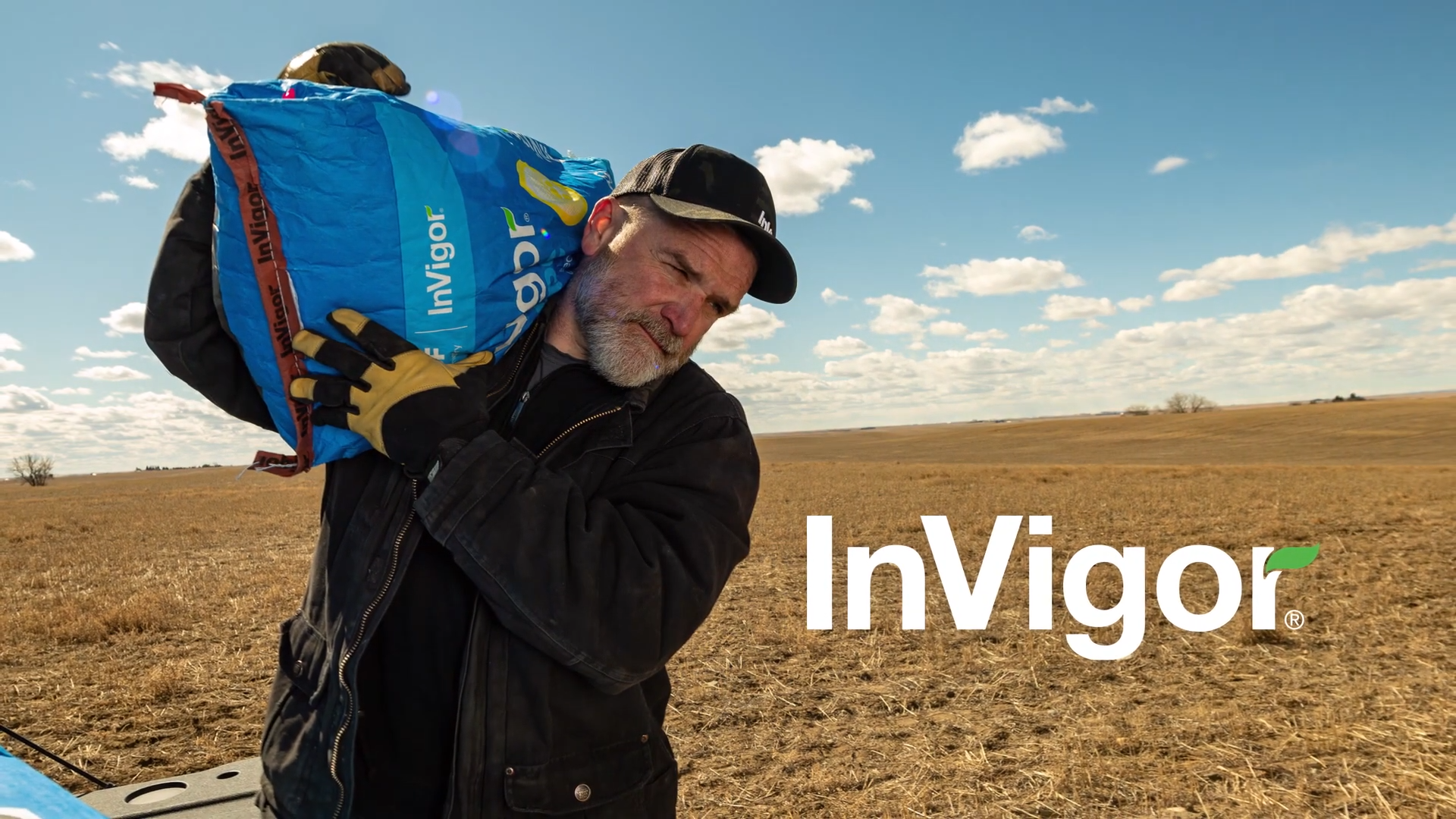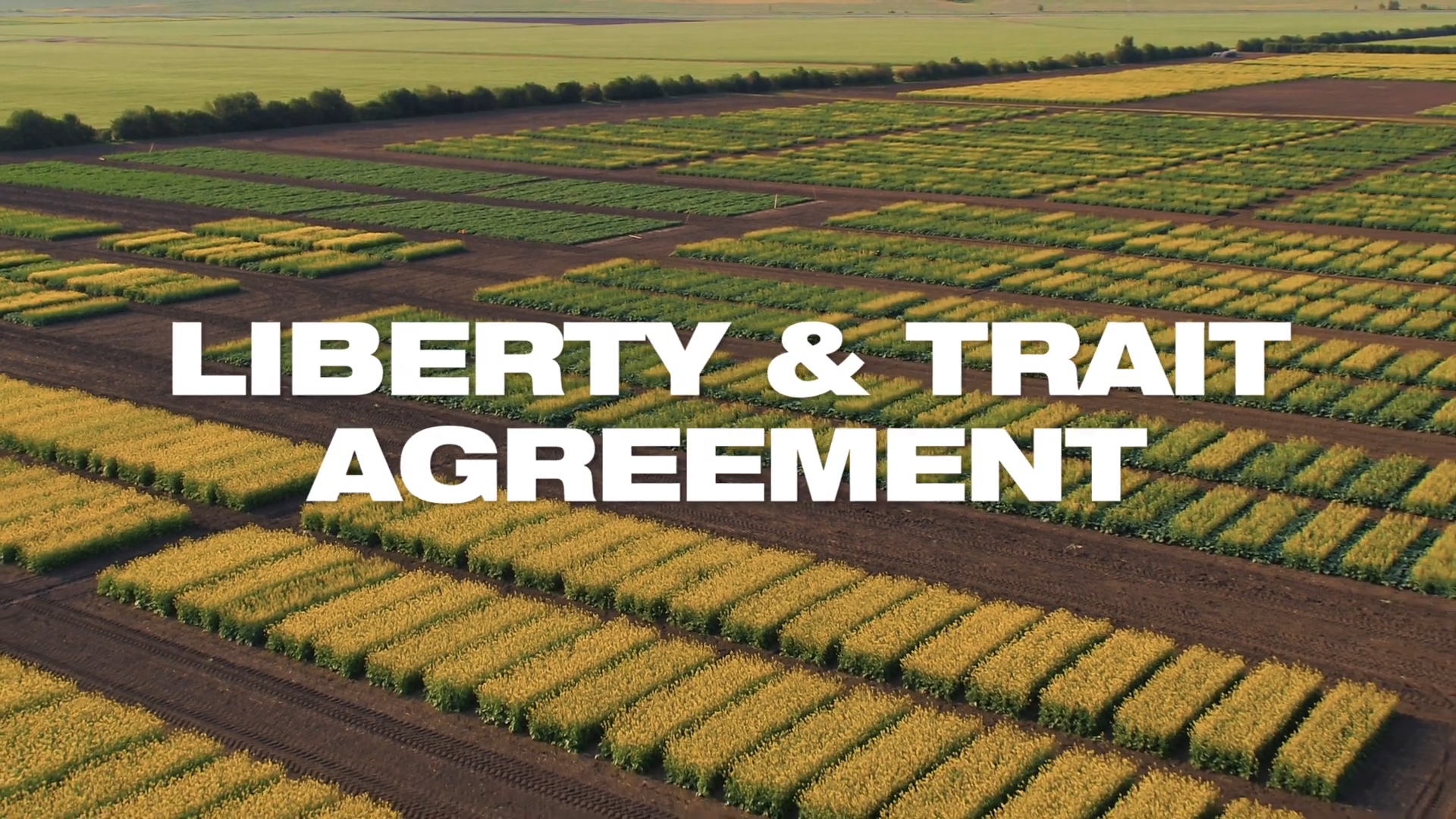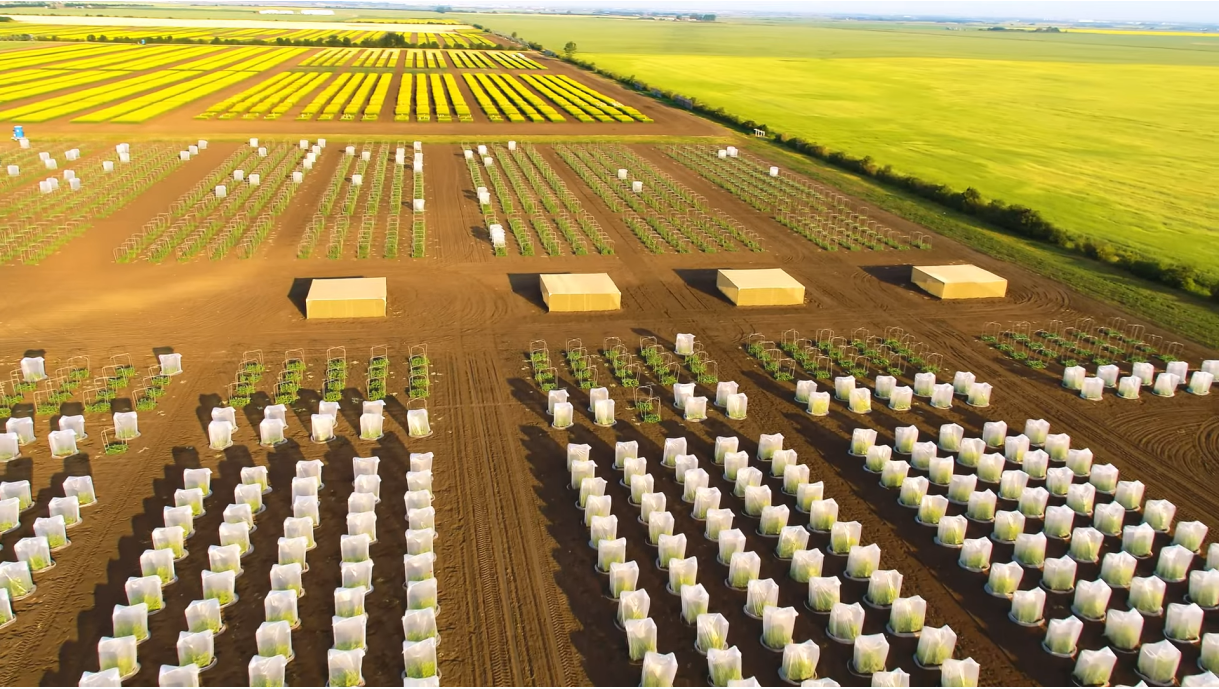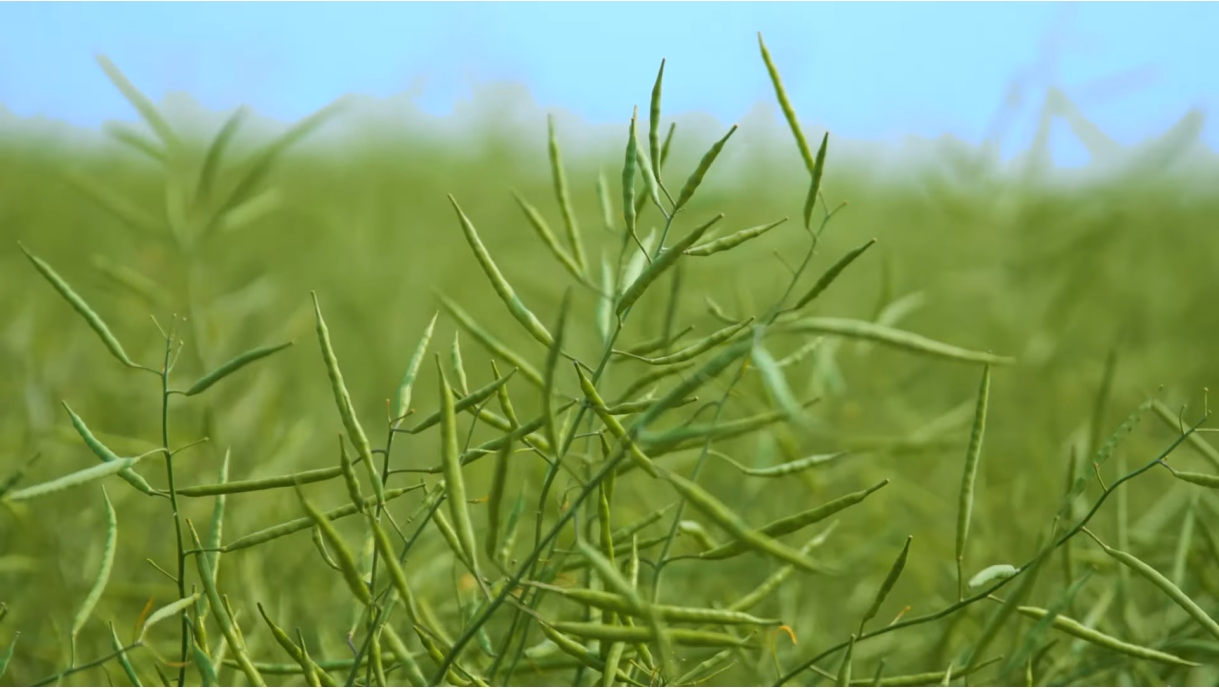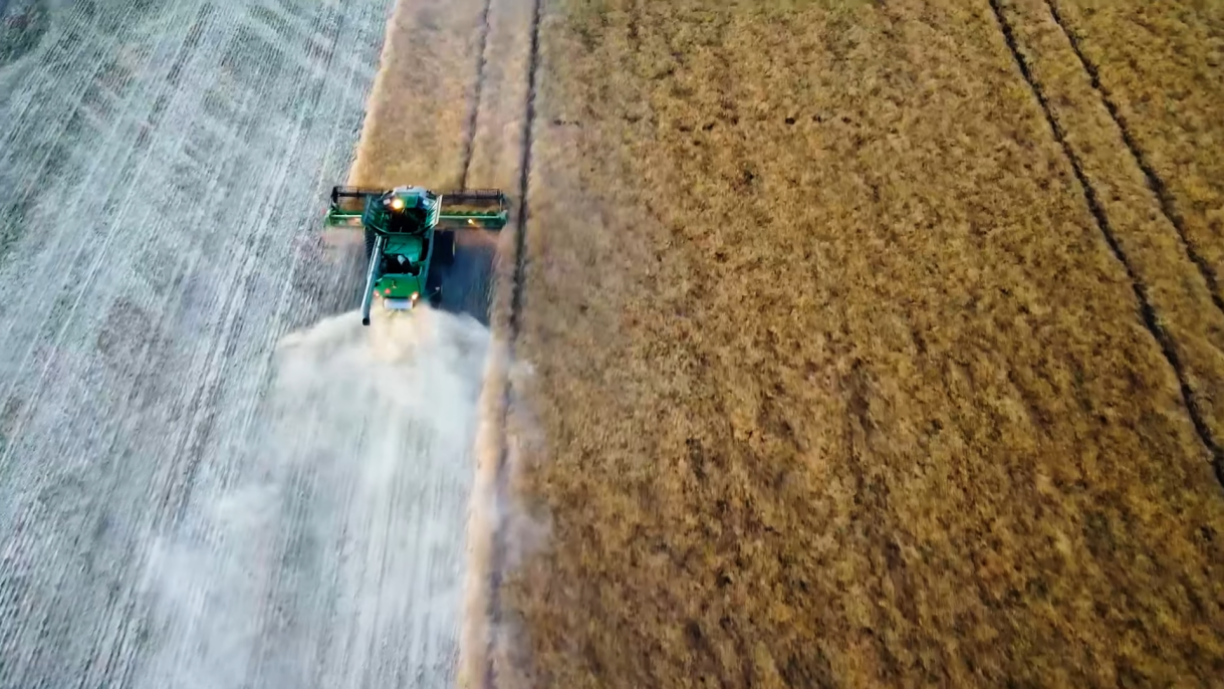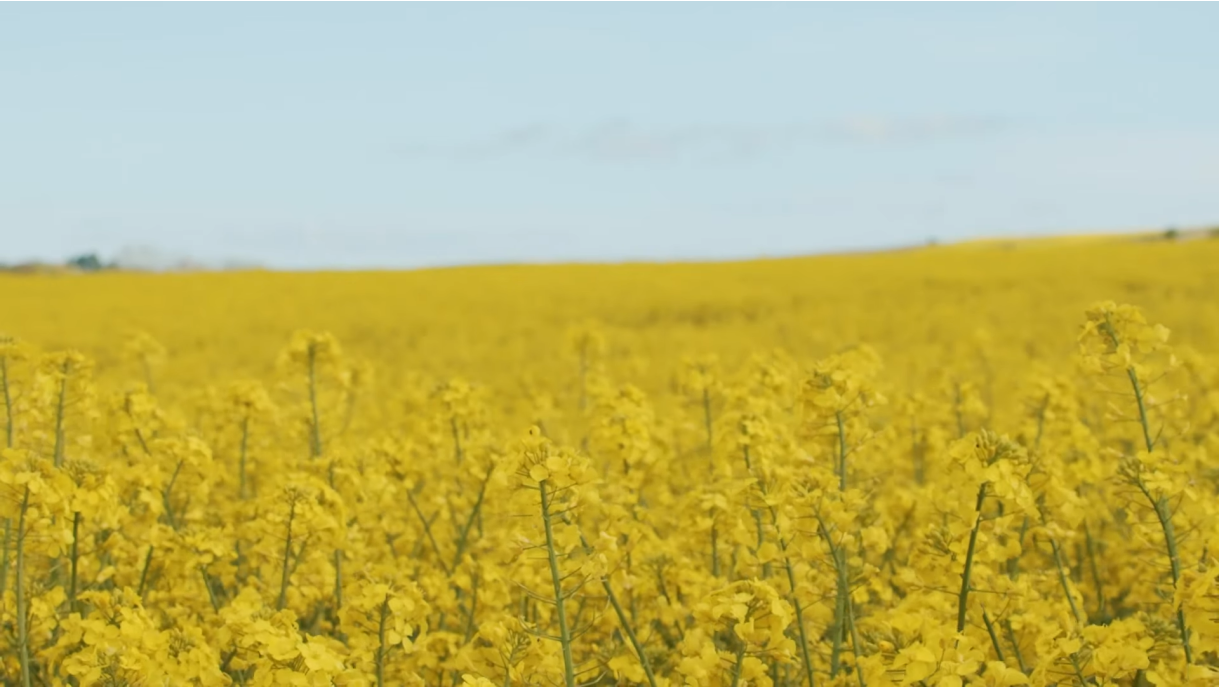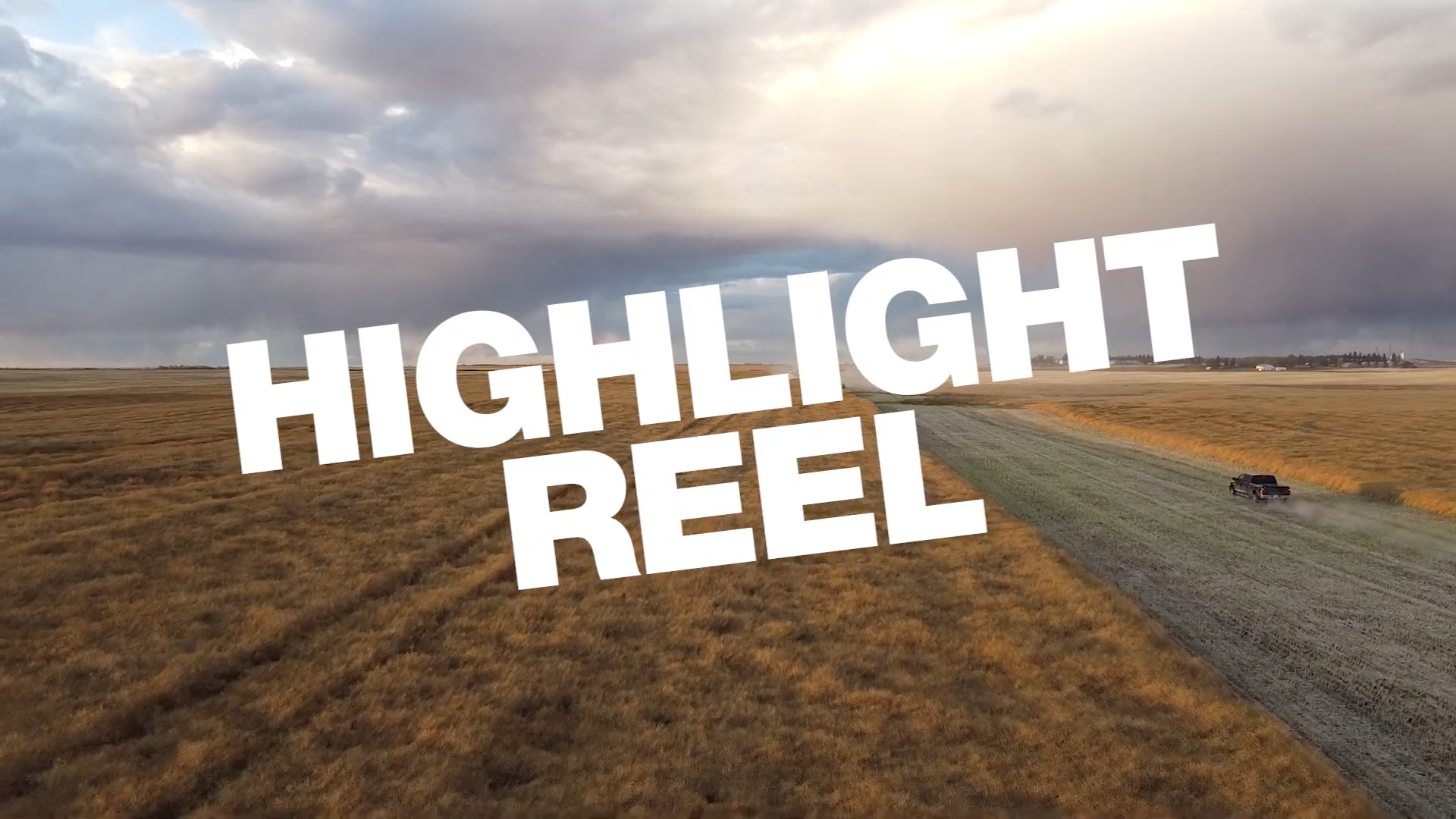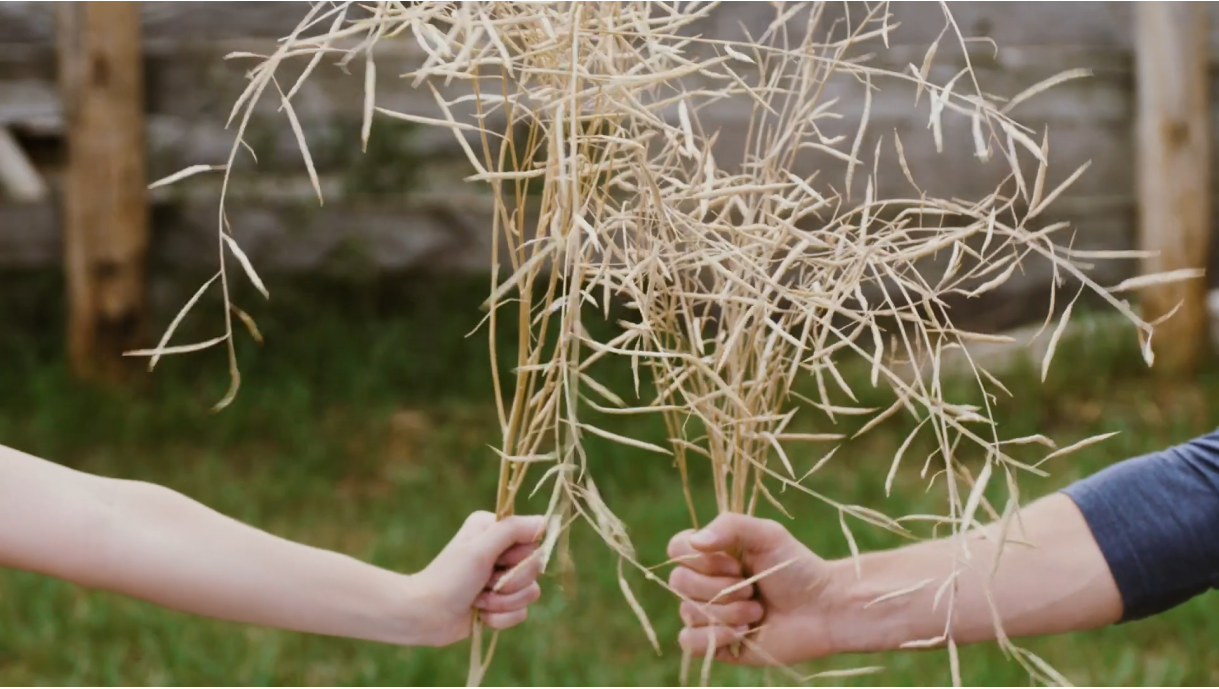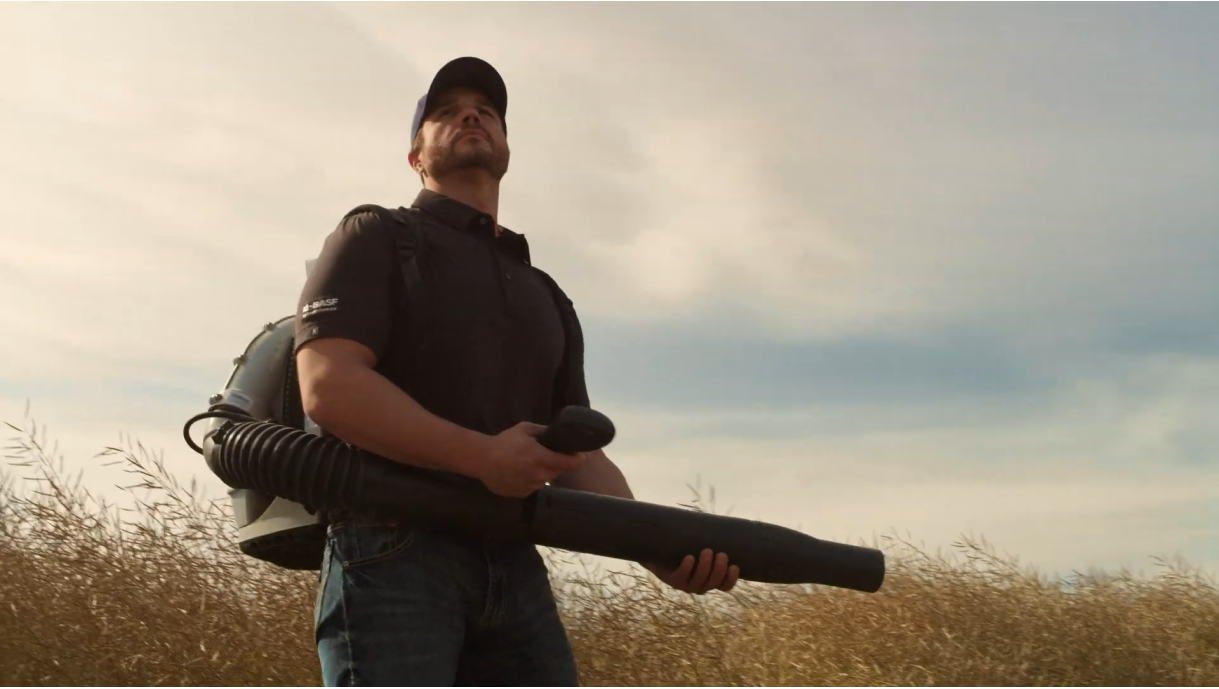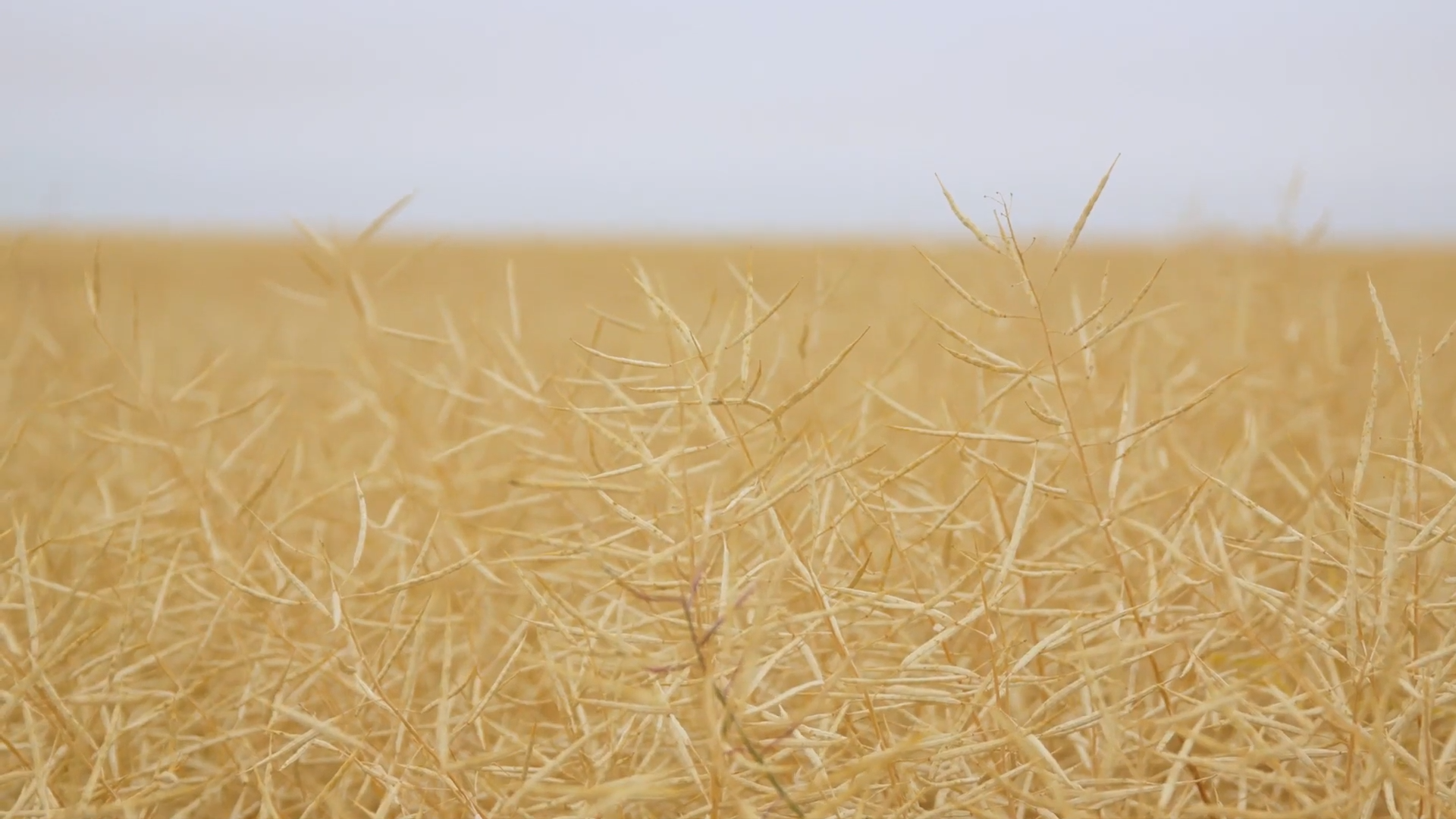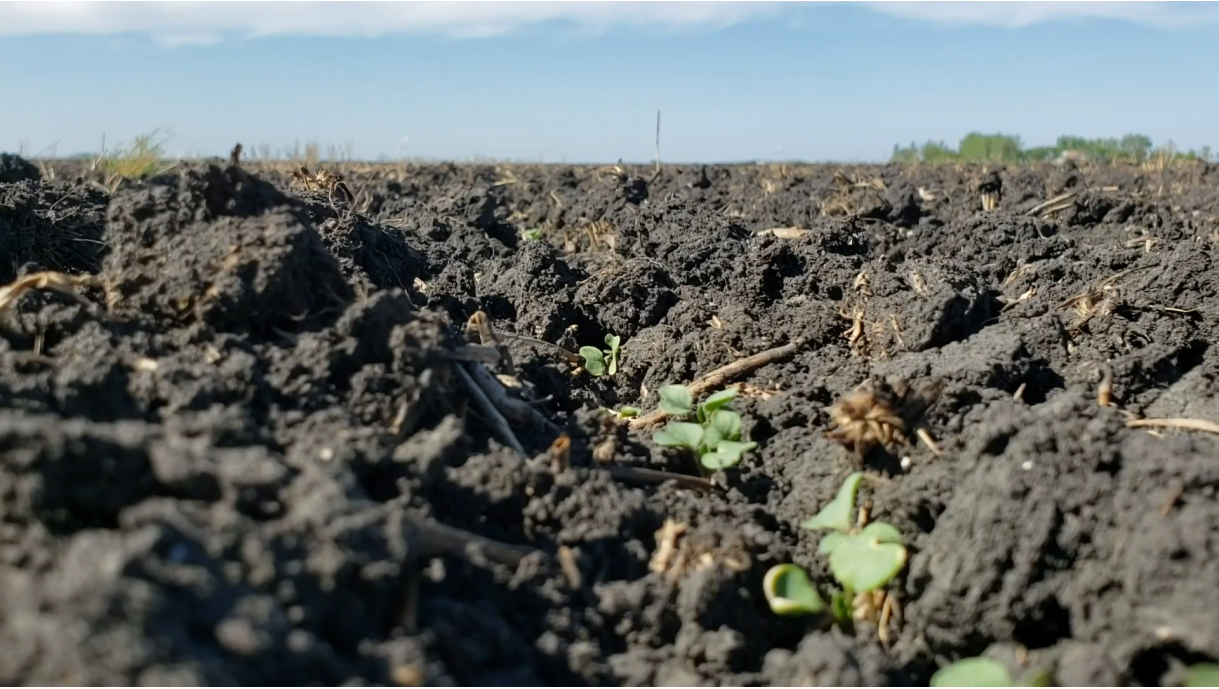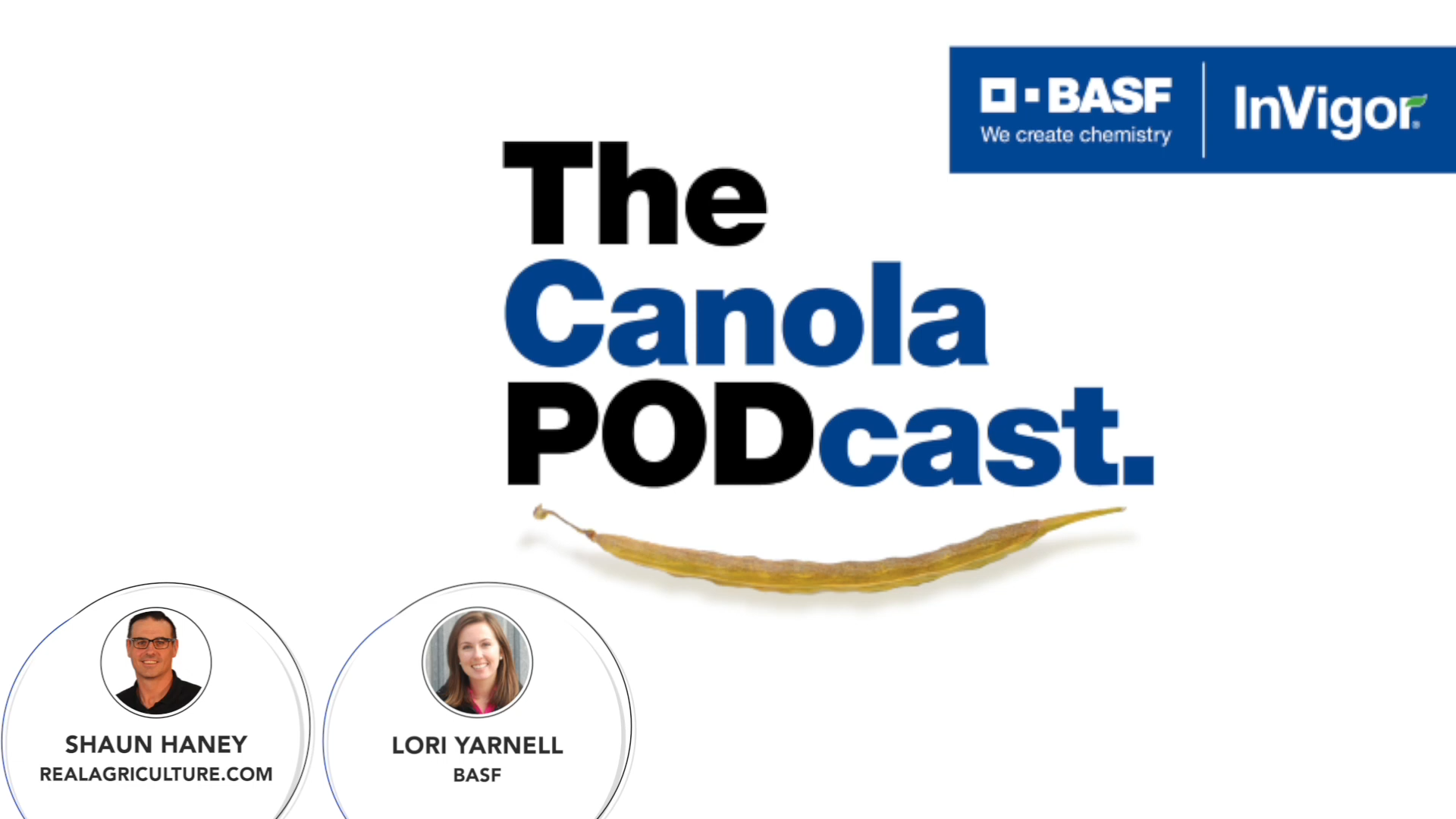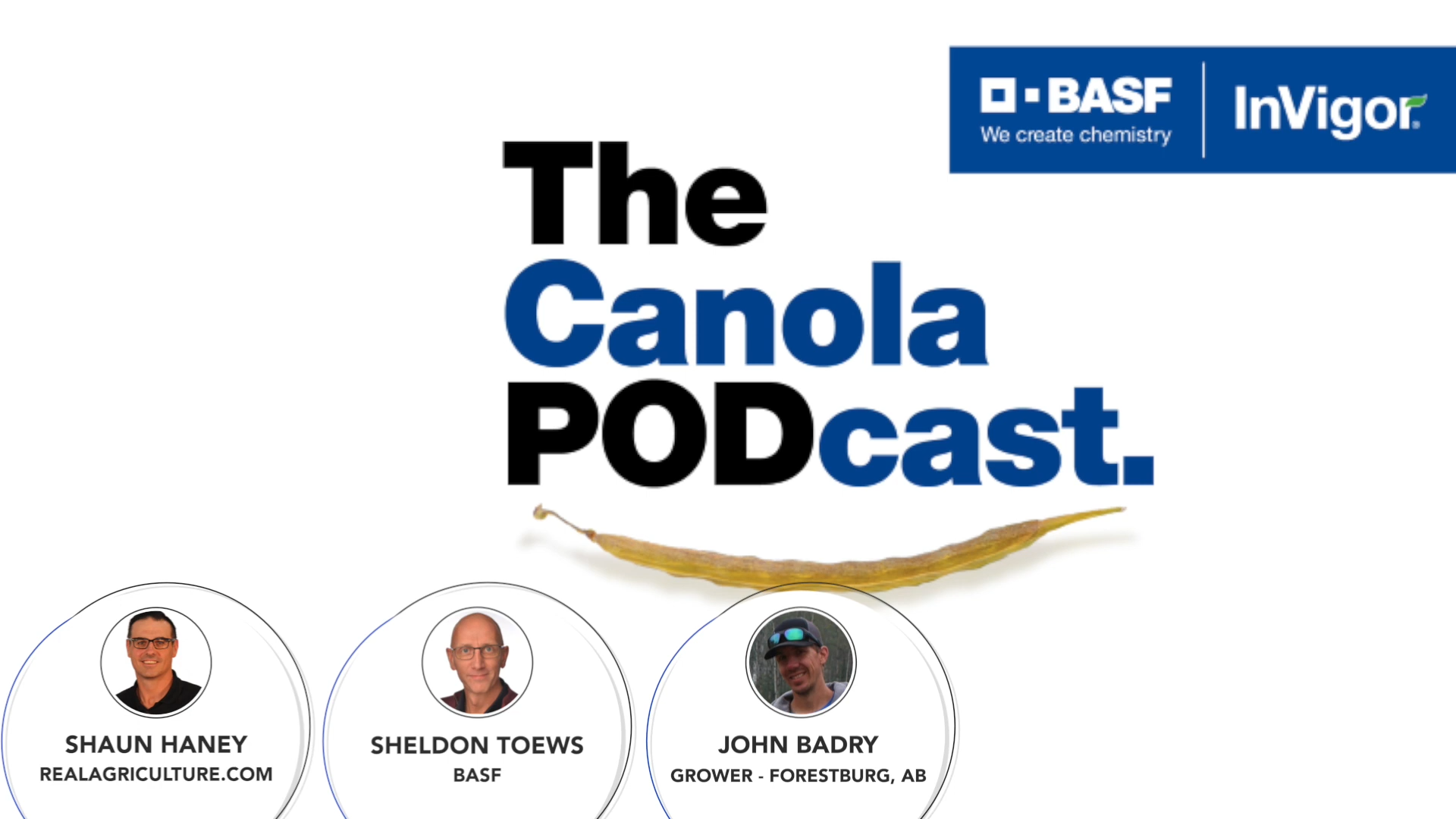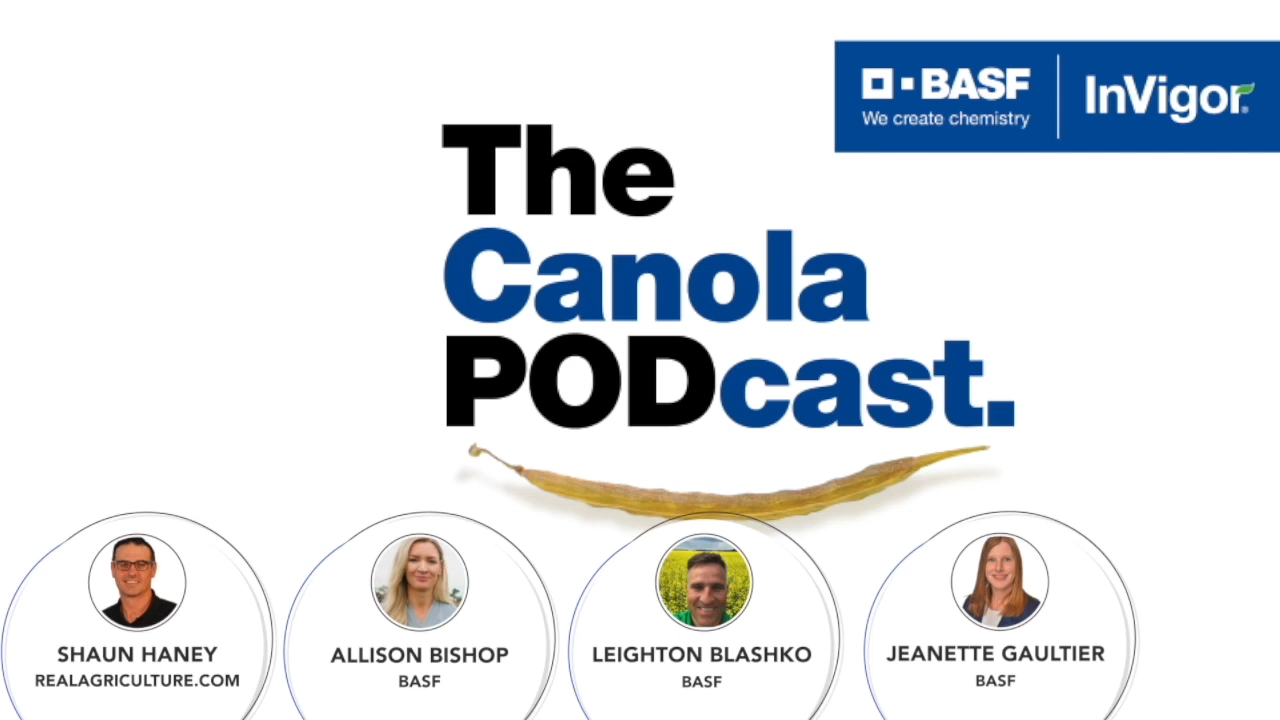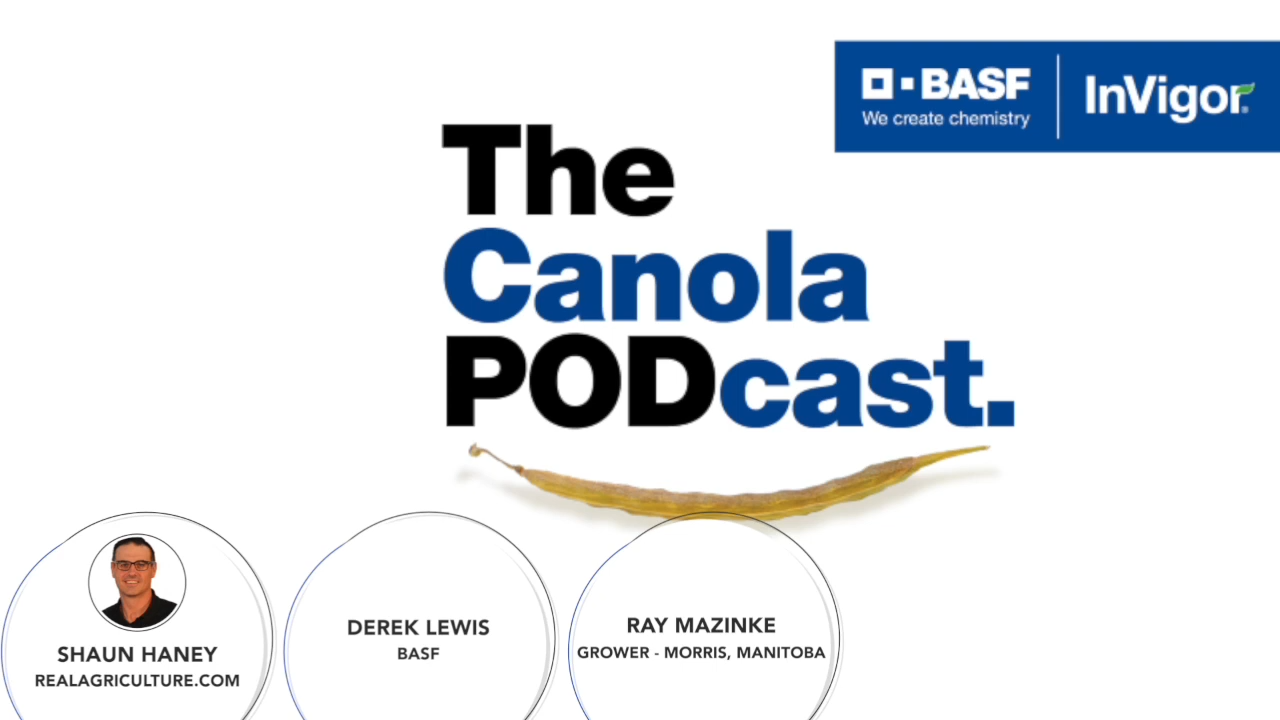Looking for more? We’ve got you covered.
If you’re looking for a certain resource or just want more information on InVigor® hybrid canola, you’re in the right place. Use the search filters below to narrow down the selection of resources and help find what you’re looking for.
Download centre.
Get access to all things InVigor. You’ve got technology sheets, videos, brochures and more at your fingertips.
Downloads
InVigor in a Minute
Only have a minute to spare during a busy growing season? Don’t worry, we cover what you need to know in our InVigor in a Minute video series.

InVigor in a Minute - 2026 InVigor Hybrid Canola Lineup
Each season your goal is the same, to get the most from every canola acre, and in 2026, the InVigor hybrid canola lineup from BASF gives you more tools than ever to do just that. With a full range of early, mid and later maturing hybrids, including new InVigor L355PC, you can find the right fit for every field, growing zone and harvest strategy.
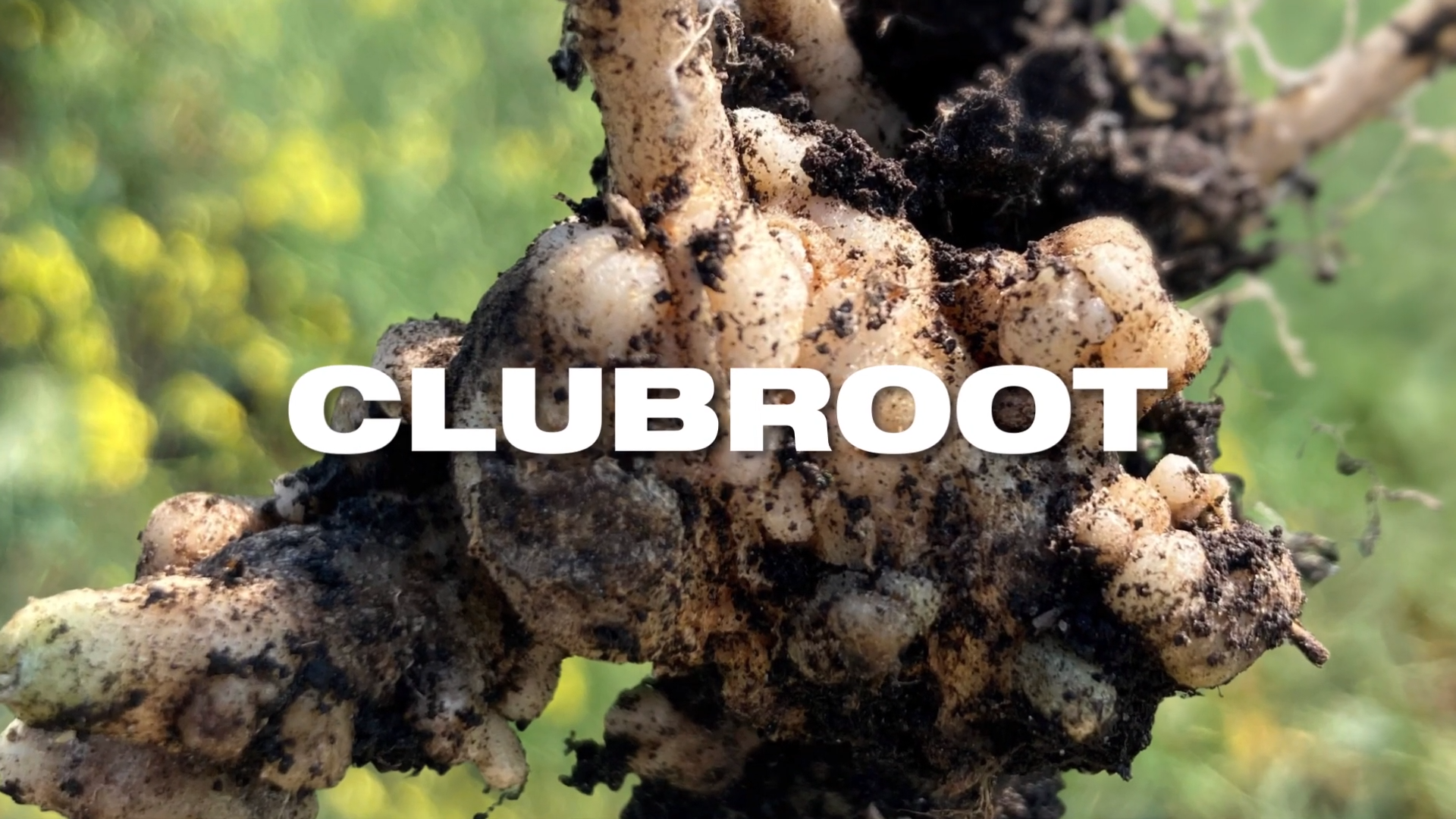
InVigor in a Minute - Effective Clubroot Management
At BASF, we’re committed to leading and supporting the industry in the fight against clubroot, with tried and true genetics and innovations. Effective clubroot management starts with the right InVigor hybrid canola. All InVigor hybrids come with patented Pod Shatter Reduction technology, with some hybrids using multiple sources of clubroot resistance.
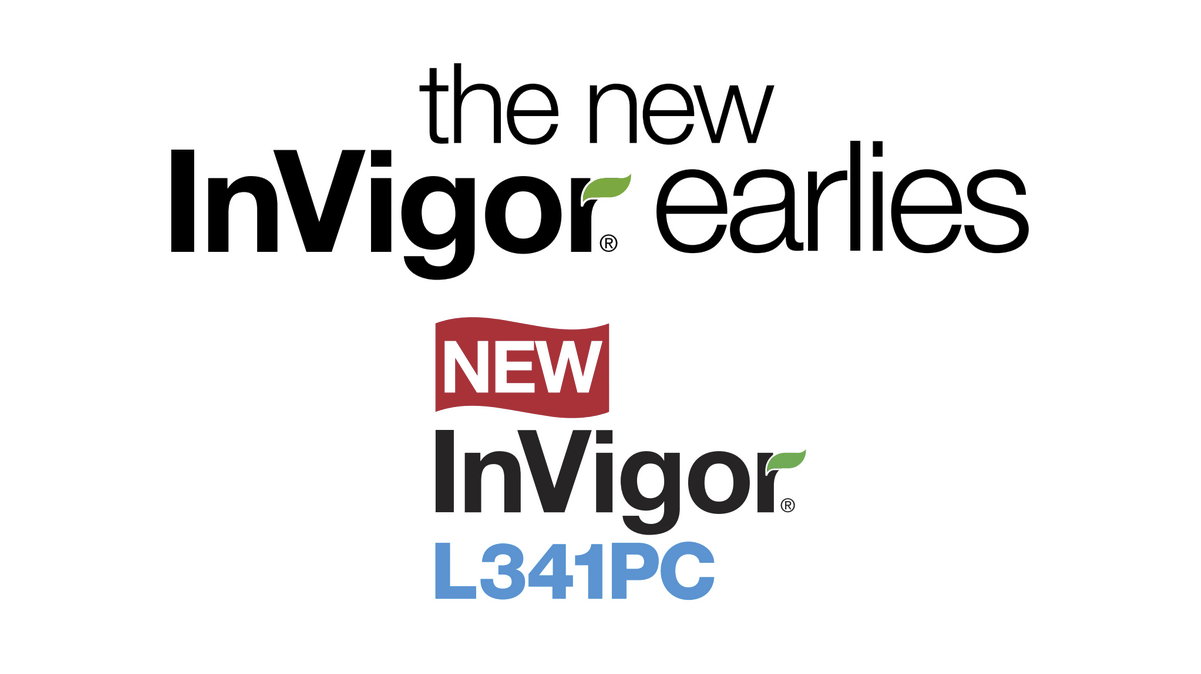
InVigor in a Minute - New InVigor L341PC
A new, early-maturing second-generation hybrid has arrived – and it comes packed with so much potential. We’re committed to providing leadership and support to the industry so that you can manage clubroot without sacrificing yield potential. New InVigor L341PC is an early-maturing second-generation clubroot-resistant hybrid that is a great fit for Alberta growers in all growing zones.

InVigor in a Minute - InVigor L355PC
Breathe a sigh of relief with next-level performance with InVigor L355PC, offering our most robust disease package of any InVigor hybrid. It's built for mid to long growing zones with patented Pod Shatter Reduction technology, first-generation clubroot resistance, strong standability, strong blackleg, verticillium stripe ratings, and yield potential you can count on.

InVigor in a Minute - InVigor Earlies
You asked, and we answered. The new InVigor Earlies have arrived. Introducing InVigor L330PC and InVigor L333PC – two new hybrids that add even more potential to your canola acres. They are a great fit for those in short and mid growing zones, or if you’re looking to beat the heat and get the combines rolling early.
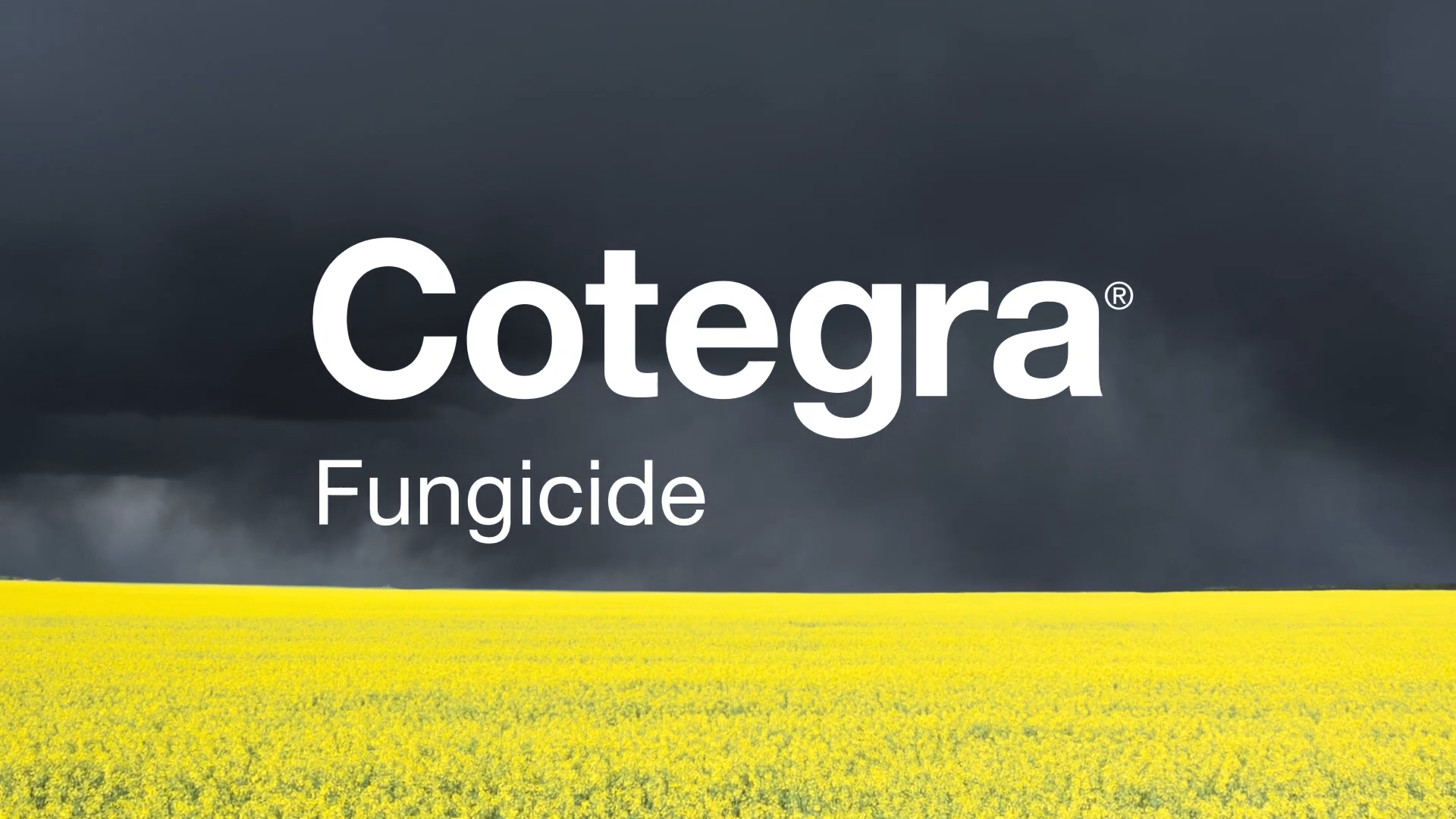
InVigor in a Minute – InVigor hybrid canola and Cotegra fungicide
When you choose InVigor hybrid canola, you’re investing in a product that doesn’t compromise. So isn’t it only right you protect it with a product that matches these values? InVigor hybrid canola and Cotegra fungicide is a pairing in performance.

InVigor in a Minute - Introducing the All Around Performer - InVigor L350PC
Looking for a high-yielding hybrid in the mid to long growing zones? InVigor L350PC has it all. Our highest-yielding hybrid in BASF breeding trials to date, this hybrid combines standability, first-generation clubroot resistance and our patented Pod Shatter Reduction technology.

InVigor in a Minute - Introducing a new flexible hybrid - InVigor Choice LR354PC
A choice hybrid for those who want flexibility. InVigor Choice LR354PC offers growers high yield potential and great standability; with the added flexibility of harnessing both the LibertyLink technology system and TruFlex canola with Roundup Ready Technology.
InVigor Behind the Bag
There’s more behind every bag of InVigor with BASF. See how our dedication to innovation goes beyond high-performance genetics to help growers have a successful season.
Will it Shatter
See the patented Pod Shatter Reduction difference. We compare our patented trait to the competition to show what it means to growers when it counts.

Will it Shatter – Paint Can
Take our trusted technology out for a spin, or in this case, a shake. See our patented Pod Shatter Reduction technology be put to the test in this latest “Will it Shatter?” video. You can trust our technology to help protect your yield potential by safely retaining the seeds in the pod until you are ready to harvest, and you’ll see the results for yourself in this video.
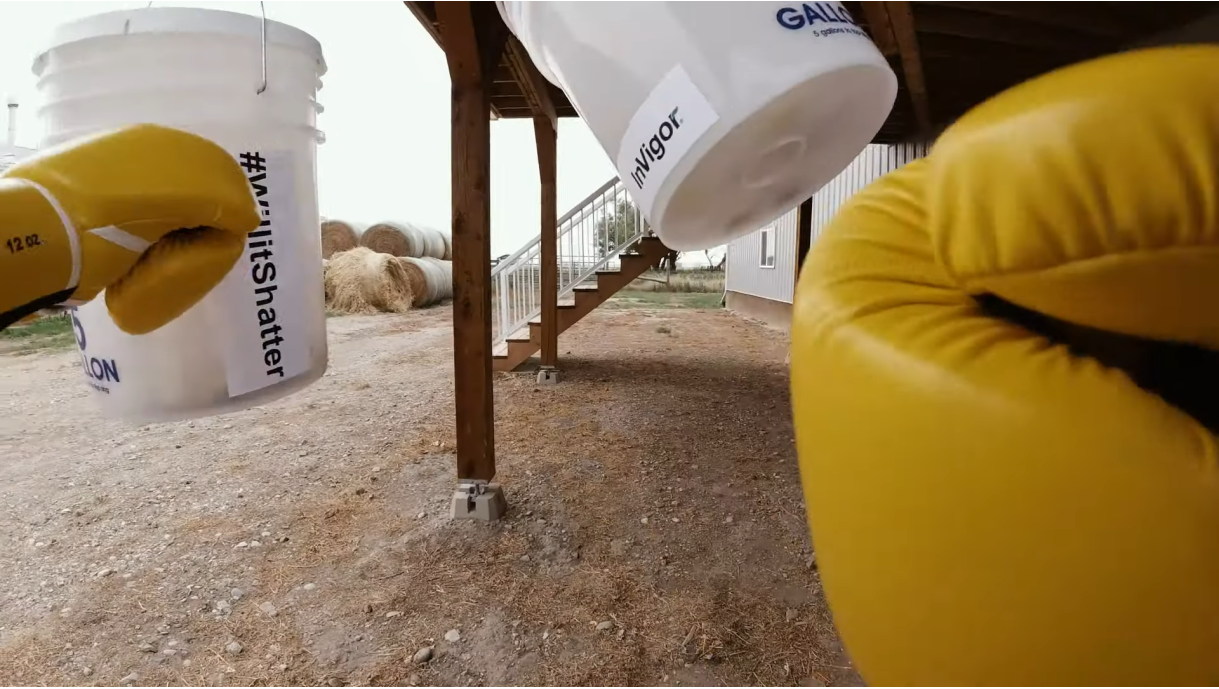
Will it Shatter – Boxing
Take our trusted technology out for a spin.
When it comes to technology, we know that seeing is believing. Why not put it on the ropes to see how the trait holds itself together. We ask our very own patented technology “Will it Shatter?” with this out of the box (but inside the bucket) idea. See how our patented Pod Shatter Reduction technology performs in this video.

Will it Shatter – Just Harvested
InVigor hybrid canola from BASF developed its very own patented Pod Shatter Reduction technology and introduced it to growers in 2014. The trait has been trusted to safely retain the seeds in the pod and help preserve yield potential on over 40 million acres. The patented Pod Shatter Reduction trait strengthens both pod seams and stems to give the plants excellent pod shatter reduction characteristics and safely retain the seeds in the pod until you are ready to harvest. We ask our very own patented technology “Will it Shatter?” with this out of the box (but inside the bucket) ideas. See how our patented Pod Shatter Reduction technology performs in this video.
Disease Management
Disease management is all about being proactive rather than reactive. See how information and solutions from BASF can keep you a step ahead.
PODcast
Throw on our Canola PODcasts while you sip your morning coffee or roll through your fields for insights on canola you don’t want to miss.
FAQ
What is Modalex?
For 2026, Modalex™ seed treatment is the new base treatment for InVigor canola hybrids. Modalex replaces thiamethoxam with clothianidin, which has been applied across millions of acres in Western Canada. Modalex is backed by extensive field research and experience and delivers the flexibility to select additional top seed treatments tailored to your specific pest challenges.
Talk to your retailer early about your seed treatment needs to secure solutions for your farm. |
Regarding InVigor® hybrid canola, does the seeding rate recommendation change with bags treated with LumidermTM seed treatment?
| For InVigor® hybrid canola, the seeding rate does not change when treated with LumidermTM seed treatment. The addition of LumidermTM seed treatment is an optional seed treatment a grower can select for additional protection against cutworms or flea beetles. LumidermTM seed treatment is applied at a standard rate across all thousand seed weights (TSW). |
For InVigor® hybrid canola, how is seed size measured? Is it measured by thousand seed weight?
| For InVigor® hybrid canola, seed size is measured according to industry standard. The seed industry measures average lot seed size by measuring the weight in grams of 1000 seeds, which is called thousand seed weight (TSW). |
In regard to canola seed, why does BASF use thousand seed weight (TSW) versus thousand kernel weight (TKW)?
| BASF uses thousand seed weight (TSW) for canola seed. TKW stands for thousand kernel weight, which is measured in grams and is a standard within the Canadian Food Inspection Agency for other crops. Since canola is not a kernel, the common term used is TSW or thousand seed weight. |
Regarding InVigor® hybrid canola, what is the difference between the thousand seed weight (TSW) on the tag and the TSW range on the bag?
| For InVigor® hybrid canola, every canola seed lot that is processed is assigned a thousand seed weight (TSW), which represents the average seed size of that lot. The TSW indicated on the seed tag is the actual TSW of the lot and aligns with the InVigor seed packaging range, identified by one of the 4 bag ranges (A, B, C or D). |
For InVigor® hybrid canola, is thousand seed weight (TSW) measured prior to seed treating or after?
| The thousand seed weight (TSW) of any given InVigor® hybrid canola seed lot is measured before any seed additive or treatment occurs. |
Regarding InVigor® hybrid canola, does the addition of a seed treatment and/or biological seed treatment result in a bigger seed and does this affect seed size, weight and calibration?
| For InVigor® hybrid canola, the addition of seed treatments and/or biological seed treatments does not affect seed size, weight or calibration for seeding. The amount of product applied to a single seed is so low it does not significantly change the thousand seed weight (TSW), regardless of bare seed size. |
For InVigor® hybrid canola, does seed perform differently in terms of germination, vigour or yield when comparing the C and D ranges versus the A and B ranges?
| InVigor® hybrid canola research from the BASF Agronomic Excellence Team shows there is no difference in the emergence, vigour and yield performance of InVigor hybrid canola in seed size ranges A through D. There are several independent studies that support and show the same results as those observed by the Agronomic Excellence Team. |
Why does Neil Harker’s research suggest that bigger seed is better? Why are the results different from your findings?
| Dr. Neil Harker, research scientist from Agriculture & Agri-Food Canada, published a study on seed size, which supports the work done by the Agronomic Excellence Team, showing that there are no differences in the emergence and yield performance of hybrids based on thousand seed weights (TSW). Harker’s research concluded that there was a difference in the early-season biomass seed in the small fraction versus medium and large fractions from within one seed lot. Harker’s findings also illustrated that the difference in seed sizes did not lead to differences in canola emergence or yield. It is important to note that the methodology that Harker used was different than what the Agronomic Excellence Team used. Harker took one seed lot and separated the lot into different categories of seed size and conducted the trials on each category of seed sizes within the lot. The Agronomic Excellence Team used whole seed lots that were not fractioned into different sizes but measured based on the average TSW of the lot. However, the Agronomic Excellence Team has performed similar work with fractioned seed, which demonstrates that the smallest seeds within a seed lot have less vigour than the balance of the seed lot. This is similar to the findings of Harker’s research. It is important to keep in mind that every seed lot has a distribution of seed sizes within it and does not contain just one size. However, the seed in a bag of InVigor has no detectable difference in performance between a TSW of 4.0 and 5.9 grams. |
For InVigor® hybrid canola, how are the seeding rate recommendations determined?
| InVigor® hybrid canola seeding rate recommendations are calculated to result in an end plant population of 5 to 7 plants/ft². By seeding approximately 10 seeds/ft² and taking into consideration an average survivability of 60%, the grower should achieve 6 plants/ft² on average. It’s important to remember that results may vary on your farm due to environmental factors and preferred management practices. For best practice, growers should determine the survivability on each piece of land they farm to ensure they are achieving the desired 5 to 7 plants/ft². For example: Range “A” contains thousand seed weights (TSWs) between 4.0 g and 4.4 g. The seeding rate recommendation will be based on the 4.4 g TSW assuming a planting rate of about 10 seeds/ft², targeting 60% survivability with the goal of achieving 6 plants/ft². (Seeding rate (lb/ac) = (9.6 x 6 plants/ft² * 4.4 g)/60 = 4.2 lb/ac) |
When planting InVigor® hybrid canola based on the recommended seeding rates on the seed bag packaging, how do I calibrate for the seeding rate if my drill row spacing is wider or narrower than 12"?
| The BASF InVigor® hybrid canola target plant population research is based off 10 to 12" row spacing. The targeted plant population of 5 to 7 plants/ft² remains consistent regardless of row spacing. It is important to note that increased row spacing can affect other factors, such as delayed maturity and weed management if spacing becomes too wide. This is due to factors, such as seed bed utilization, that should be considered when planting for a successful canola crop. |
For InVigor® hybrid canola, does seeding with seed singulation equipment impact the suggested InVigor seeding rates or targeted plant population recommendation?
| Seeding your InVigor® hybrid canola seed with seed singulation equipment does not impact the suggested InVigor seeding rates or targeted plant population recommendations. The recommended plant population for InVigor is 5 to 7 plants/ft², regardless of how it is seeded. However, the survivability of the seed may be different using seed singulation planting methods. Please contact your seeder manufacturer for accurate calibration instructions. |
How many seeds are in each bag of InVigor® hybrid canola?
| InVigor® hybrid canola seed bags contain a minimum of 4.25 million seeds in each bag, regardless of the thousand seed weight (TSW) of the hybrid seed lot. |
How many seeds are in each mini bulk tote of InVigor® hybrid canola?
| InVigor® hybrid canola mini bulk totes of seed contain a minimum of 85 million seeds in each tote, regardless of the thousand seed weight (TSW) of the hybrid seed lot. |
How many acres can be seeded with a bag of InVigor® hybrid canola?
| Every bag of InVigor® hybrid canola is designed to seed 10 acres based on recommended target plant populations of 5 to 7 plants/ft² and recommended seeding rates. InVigor seed packaging will provide more consistency in the number of seeds in every bag and the predictability in the number of acres that can be seeded with every bag of InVigor. Because every bag will contain a minimum of 4.25 million seeds, regardless of the thousand seed weight, you’ll notice a difference in the size and weight of a range “A” bag (smaller) compared to a range “D” bag (larger), but the minimum amount of seed in each, remains the same. |
How do I identify which range (A through D) my InVigor® hybrid canola has?
| You can now identify the range your InVigor® hybrid canola is by looking for the letter (A, B, C or D) printed on the sides and front of the bag. With the seed range clearly printed, each bag of InVigor canola will also have recommended seeding rate charts printed on the back of the bag so you can adjust for your specific environmental or management practices. In addition, ranges for mini bulk totes will also be clearly identified in the same way. |
Will the InVigor® hybrid canola InVigor RATE thousand seed weight (TSW) ranges change from year to year?
| InVigor® hybrid canola seed bag ranges for InVigor RATE recommendations will not change from year to year. BASF plans to maintain four ranges (A, B, C and D) and keep these ranges consistent between 4.0 and 5.9 g TSWs. It is important to note that the ranges available from hybrid to hybrid will vary based on production from year to year. |
Will InVigor® hybrid canola bags provide a seeding rate recommendation in lbs/acre?
| InVigor® hybrid canola bags are recommended to seed 10 acres/bag based on seeding approximately 10 seeds/ft² with 60% survivability pre-calculated for you. All InVigor packages also have printed seeding recommendation charts in lbs/acre on the back of each hybrid bag. These charts will provide you quick recommendations so that your seeding rates may be adjusted for your specific seeding practices or environmental conditions. |
For InVigor® hybrid canola, what if a grower wants to fine tune their seeding rate based on the actual thousand seed weight (TSW) on the certified seed tag?
| On each bag of InVigor® hybrid canola, the actual TSW of each seed lot is printed on the seed tag. This will allow growers to calibrate specifically to the exact TSW and not the range listed should they choose to do so. In addition, seeding rates can also be adjusted based off of actual survivability of the field that the grower has determined. There are three charts on the back of every bag that a grower can use to further refine their seeding rate based off of 50%, 60% or 70% survivability. On each of the charts, the seeding rate can be further refined by choosing the desired plant stand of 5, 6 or 7 plants/ft². All charts will display the recommended BASF seeding rate, which assumes 60% survivability and a desired plant stand of 5 to 7 plants/ft². This seeding rate will also be displayed on the front of the bag. |
For InVigor® hybrid canola varieties, will growers be able to order by range?
| Unfortunately growers will not be able to order their InVigor® hybrid seed varieties by range. A variety of factors, such as genetics and environment, influence the thousand seed weight (TSW) of the seed lots available in a given year, which makes it impossible for BASF to predict the actual volumes of each range available. It is important to remember that BASF research has shown that the performance of our hybrids is consistent between ranges “A”, “B”, “C” or “D” when seeded to target 5 to 7 plants/ft² – so there is no need to seek out specific TSW ranges. |
How does InVigor® RATE packaging affect storage and stacking of pallets for InVigor hybrid canola?
| InVigor® RATE packaging of InVigor hybrid canola will not change the total number of bags of seed per pallet. Due to the different ranges and weights associated with InVigor RATE packaging, ranges A, B, C and D weights and dimensions will be different. However, the footprint each pallet consumes will be identical and pallets can still be stacked two high. |
What effect will InVigor® RATE have on my InVigor hybrid canola seed costs?
| There will not be a price difference based on each range of InVigor® hybrid canola based on thousand seed weight (TSW). The performance is equal among all the ranges, so there will be no price difference between different ranges. |
Will there be price differences based on each range of InVigor® hybrid canola thousand seed weight (TSW)?
| No, there will be no difference in price based on range. The performance is equal among all the ranges so there will be no price difference between different ranges. |
Does a grower need a specific thousand seed weight (TSW) on their InVigor® hybrid canola to seed with a planter?
| Seeding InVigor® hybrid canola with a planter does not require a specific thousand seed weight (TSW) within the InVigor bag ranges. Current planters have been developed for corn and soybeans and many have not been optimized to seed canola. The disk and size of the disk holes need to be considered when seeding canola with a planter. Having consistent seed size within the seed lot ensures the correct number of seeds are being planted. Each lot of seed contains a distribution of seed sizes within it, with the labeled TSW being the average seed size across the lot. This practice is used across all canola seed lots on the market today. Generally, the less variation in seed size within the lot, the more suitable it will be for planters. BASF has incorporated conditioning processes to reduce the amount of variability within a seed lot. Seed conditioning is a multistep process involving seed separation by size, shape and density. BASF has refined their conditioning process to target seeds that do not perform as consistently as other seed within the lot. Conditioning of InVigor hybrid canola seed largely removes the majority of the underperforming seeds from the lot. The performance of the planter in relation to a specific TSW can’t be predicted without testing. |
When it comes to InVigor® hybrid canola, is bigger seed better?
| Bigger seed does not mean better seed when it comes to InVigor® hybrid canola.The seed in a bag of InVigor has no detectable difference in performance between a thousand seed weight (TSW) of 4.0 and 5.9 grams. |
When it comes to InVigor® hybrid canola, does a grower need to plant 10 canola seeds/ft²?
| When planting InVigor® hybrid canola, planting 10 seeds/ft² is a general recommendation based on the average emergence of plants being 50 to 70% when seeded with an air drill. Many factors can influence seed emergence and using a planter does not impact emergence to the same extent as soil moisture and residue management. Precise control of seed depth into available moisture combined with effective on-row packing can increase emergence. If you combine singulation, precise control of depth and effective seed placement under ideal environmental conditions (ideal moisture and warm soil temperature), you can reduce your seeding rate. However, you should be targeting the same number of established plants (5 to 7 plants/ft²). If a grower seeds at 10 seeds/ft² and produces 6 plants/ft², this is 60% survivability. If seeding with a planter increases survivability by 15%, moving survivability to 75%, then they can reduce the number of seeds that they are seeding by 2 to 8 seeds/ft². |
In canola, what is the relationship between row spacing and its effect on plant population within the row?
| In canola, the relationship between row spacing and its effect on plant population within the row should have the following considerations. When comparing a narrow row (10”) to a wide row (20”), BASF research on InVigor® hybrid canola shows that there isn’t an advantage to reducing the number of plants per square foot. The lowest yielding combination from our trials have been with wide rows and low seeding rates. The conventional thinking is that if a grower doubles the row spacing, they can reduce the seeding rate by half, but our data suggests targeting 5 to 7 plants/ft² still delivers the highest yield, regardless of the row spacing. |
What is InVigor® RATE?
| InVigor® RATE is a targeted plant population (TPP) recommendation supported by seed-count packaging to help improve both the performance and consistency of InVigor hybrid canola. |
What are the agronomics behind InVigor® RATE?
| Seeding rates of 10 canola seeds/ft² equates to 5 to 7 plants/ft² for InVigor® hybrid canola with the following methodology. BASF Agronomic Excellence team found that in Western Canada, the average survivability of InVigor hybrid canola is approximately 50 to 70%. By seeding approximately 10 seeds/ft², and assuming an average survivability rate of 50 to 70%, this will produce 5 to 7 plants/ft². There is a lot of agronomic research behind InVigor® RATE. The BASF Agronomic Excellence team was established to provide the best agronomic recommendations for growing InVigor, which helps growers take their InVigor hybrids to the next level. (a) Years of research by the Agronomic Excellence team from BASF shows that the optimal target plant population to maximize yield, agronomic performance and consistency of InVigor hybrid canola is 5 to 7 plants/ft². (b)The average survivability of InVigor canola across Western Canada is 50 to 70%. In order to achieve the TPP of 5 to 7 plants/ft², growers will need to account for the thousand seed weight (TSW) of their seed when seeding InVigor hybrid canola and seed at the recommended seeding rate for the TSW range they are seeding. Growers will need to calibrate their drill for each range in order to achieve the recommended seeding rates. |
How does a seeding rate of 10 canola seeds/ft² equate to 5 to 7 plants/ft² for InVigor® hybrid canola?
| Seeding rates of 10 canola seeds/ft² equates to 5 to 7 plants/ft² for InVigor® hybrid canola with the following methodology. BASF Agronomic Excellence team found that in Western Canada, the average survivability of InVigor hybrid canola is approximately 50 to 70%. By seeding approximately 10 seeds/ft², and assuming an average survivability rate of 50 to 70%, this will produce 5 to 7 plants/ft². |
Why did BASF introduce InVigor® RATE?
| BASF introduced InVigor® RATE with the desire that every customer has a great experience growing InVigor. By seeding InVigor at the optimal plant population of 5 to 7 plants/ft², growers will be able to maximize the genetic potential of each InVigor hybrid. |
Do canola seed treatments and additives perform differently on larger versus smaller canola seeds?
| Canola seed treatments and/or additives do not perform differently on larger versus smaller canola seeds. The range of thousand seed weights (TSW) present in InVigor® hybrid canola packaging do not differ enough to result in any agronomic performance differences. |
Are there benefits from straight cutting canola over swathing canola?
| In BASF InVigor® DST trials, we observed a 5.4% yield increase in InVigor L233P being straight cut over the same hybrid being swathed. Growers discovered better use of manpower or greater efficiency and they can spread-out their harvest. According to growers who advocate for straight cutting, they also had higher yields by allowing the crop to mature longer. |
What clubroot pathotypes is InVigor® L343PC resistant to? Where should it be grown?
| InVigor L343PC is resistant to the predominant pathotypes present across Western Canada, plus additional recent newer pathotypes that were tested against at the time of registration. However, the nomenclature around clubroot pathotyping continues to evolve as the science and detection methods advance. Due to this uncertainty, there is real risk that what we believe is a particular pathotype today may actually be a population of multiple pathotypes that we have yet to understand. Our second-generation hybrids have been tested and is resistant against a wide range of clubroot pathotypes, including many of the new pathotypes that have been identified, and we are confident that InVigor L343PC is effective against most of these new and emerging pathotypes. In fields where first-generation hybrids cannot be grown due to the shifting pathotypes, InVigor L343PC can be used as it will perform better due to additional efficacy against some of the new pathotypes. InVigor L343PC is a good option in areas where clubroot has been a problem for several years and a grower has used first-generation hybrids for two cycles OR until clubroot symptoms appear – whichever comes first. |
What is a first-generation versus second-generation clubroot hybrid?
| First-generation InVigor® canola hybrids contain resistance genetics that were initially deployed to combat clubroot. This includes InVigor Health L358HPC, InVigor L356PC, InVigor L340PC, and L345PC. They were designed to control the predominant pathotypes in Western Canada at the time of their registration. Second-generation hybrids contain additional sources of resistance designed with multiple genes so that they are effective against a wider range of pathotypes. |
If concerned about clubroot but there is no confirmed clubroot in your farming community, is growing an InVigor® clubroot-resistant hybrid still the best choice?
| When you have not identified clubroot infection in your community but you are concerned about clubroot, you still have hybrid options to consider. In this case consider growing the InVigor® canola hybrid that best meets your needs for yield potential and agronomic characteristics (either non-clubroot resistant or first-generation clubroot resistant). Remember to keep scouting for clubroot on your farm and utilize good IPM strategies, regardless of your hybrid choice. Ultimately the goal is to keep spore numbers low. |
Other companies are labeling the clubroot pathotypes their hybrids are resistant to. What is BASF’s response to this approach?
| In response to some seed companies labeling for clubroot pathotypes, the science and nomenclature are evolving and we continue to learn about clubroot population dynamics. Clubroot pathotypes within populations are diverse and can be highly variable within a field. Generalizations about predominant pathotypes can lead to poor field performance. Furthermore, there are no current commercial testing facilities providing robust pathotyping for clubroot. As a result of these factors, you can view our current lineup and their respective pathotype resistance here, however BASF has chosen to not label our InVigor® canola hybrids on the packaging. |
What else can I do during the growing season to ensure a successful straight cut harvest in canola (from seeding to harvest)?
We have a few recommendations to help ensure a successful straight cut harvest for your canola crop.
|
Downloads
InVigor in a Minute
Only have a minute to spare during a busy growing season? Don’t worry, we cover what you need to know in our InVigor in a Minute video series.

InVigor in a Minute - 2026 InVigor Hybrid Canola Lineup
Each season your goal is the same, to get the most from every canola acre, and in 2026, the InVigor hybrid canola lineup from BASF gives you more tools than ever to do just that. With a full range of early, mid and later maturing hybrids, including new InVigor L355PC, you can find the right fit for every field, growing zone and harvest strategy.

InVigor in a Minute - Effective Clubroot Management
At BASF, we’re committed to leading and supporting the industry in the fight against clubroot, with tried and true genetics and innovations. Effective clubroot management starts with the right InVigor hybrid canola. All InVigor hybrids come with patented Pod Shatter Reduction technology, with some hybrids using multiple sources of clubroot resistance.

InVigor in a Minute - New InVigor L341PC
A new, early-maturing second-generation hybrid has arrived – and it comes packed with so much potential. We’re committed to providing leadership and support to the industry so that you can manage clubroot without sacrificing yield potential. New InVigor L341PC is an early-maturing second-generation clubroot-resistant hybrid that is a great fit for Alberta growers in all growing zones.

InVigor in a Minute - InVigor L355PC
Breathe a sigh of relief with next-level performance with InVigor L355PC, offering our most robust disease package of any InVigor hybrid. It's built for mid to long growing zones with patented Pod Shatter Reduction technology, first-generation clubroot resistance, strong standability, strong blackleg, verticillium stripe ratings, and yield potential you can count on.

InVigor in a Minute - InVigor Earlies
You asked, and we answered. The new InVigor Earlies have arrived. Introducing InVigor L330PC and InVigor L333PC – two new hybrids that add even more potential to your canola acres. They are a great fit for those in short and mid growing zones, or if you’re looking to beat the heat and get the combines rolling early.

InVigor in a Minute – InVigor hybrid canola and Cotegra fungicide
When you choose InVigor hybrid canola, you’re investing in a product that doesn’t compromise. So isn’t it only right you protect it with a product that matches these values? InVigor hybrid canola and Cotegra fungicide is a pairing in performance.

InVigor in a Minute - Introducing the All Around Performer - InVigor L350PC
Looking for a high-yielding hybrid in the mid to long growing zones? InVigor L350PC has it all. Our highest-yielding hybrid in BASF breeding trials to date, this hybrid combines standability, first-generation clubroot resistance and our patented Pod Shatter Reduction technology.

InVigor in a Minute - Introducing a new flexible hybrid - InVigor Choice LR354PC
A choice hybrid for those who want flexibility. InVigor Choice LR354PC offers growers high yield potential and great standability; with the added flexibility of harnessing both the LibertyLink technology system and TruFlex canola with Roundup Ready Technology.
InVigor Behind the Bag
There’s more behind every bag of InVigor with BASF. See how our dedication to innovation goes beyond high-performance genetics to help growers have a successful season.
Disease Management
Disease management is all about being proactive rather than reactive. See how information and solutions from BASF can keep you a step ahead.
PODcast
Throw on our Canola PODcasts while you sip your morning coffee or roll through your fields for insights on canola you don’t want to miss.
FAQ
What is Modalex?
For 2026, Modalex™ seed treatment is the new base treatment for InVigor canola hybrids. Modalex replaces thiamethoxam with clothianidin, which has been applied across millions of acres in Western Canada. Modalex is backed by extensive field research and experience and delivers the flexibility to select additional top seed treatments tailored to your specific pest challenges.
Talk to your retailer early about your seed treatment needs to secure solutions for your farm. |
Regarding InVigor® hybrid canola, does the seeding rate recommendation change with bags treated with LumidermTM seed treatment?
| For InVigor® hybrid canola, the seeding rate does not change when treated with LumidermTM seed treatment. The addition of LumidermTM seed treatment is an optional seed treatment a grower can select for additional protection against cutworms or flea beetles. LumidermTM seed treatment is applied at a standard rate across all thousand seed weights (TSW). |
For InVigor® hybrid canola, how is seed size measured? Is it measured by thousand seed weight?
| For InVigor® hybrid canola, seed size is measured according to industry standard. The seed industry measures average lot seed size by measuring the weight in grams of 1000 seeds, which is called thousand seed weight (TSW). |
In regard to canola seed, why does BASF use thousand seed weight (TSW) versus thousand kernel weight (TKW)?
| BASF uses thousand seed weight (TSW) for canola seed. TKW stands for thousand kernel weight, which is measured in grams and is a standard within the Canadian Food Inspection Agency for other crops. Since canola is not a kernel, the common term used is TSW or thousand seed weight. |
Regarding InVigor® hybrid canola, what is the difference between the thousand seed weight (TSW) on the tag and the TSW range on the bag?
| For InVigor® hybrid canola, every canola seed lot that is processed is assigned a thousand seed weight (TSW), which represents the average seed size of that lot. The TSW indicated on the seed tag is the actual TSW of the lot and aligns with the InVigor seed packaging range, identified by one of the 4 bag ranges (A, B, C or D). |
For InVigor® hybrid canola, is thousand seed weight (TSW) measured prior to seed treating or after?
| The thousand seed weight (TSW) of any given InVigor® hybrid canola seed lot is measured before any seed additive or treatment occurs. |
Regarding InVigor® hybrid canola, does the addition of a seed treatment and/or biological seed treatment result in a bigger seed and does this affect seed size, weight and calibration?
| For InVigor® hybrid canola, the addition of seed treatments and/or biological seed treatments does not affect seed size, weight or calibration for seeding. The amount of product applied to a single seed is so low it does not significantly change the thousand seed weight (TSW), regardless of bare seed size. |
For InVigor® hybrid canola, does seed perform differently in terms of germination, vigour or yield when comparing the C and D ranges versus the A and B ranges?
| InVigor® hybrid canola research from the BASF Agronomic Excellence Team shows there is no difference in the emergence, vigour and yield performance of InVigor hybrid canola in seed size ranges A through D. There are several independent studies that support and show the same results as those observed by the Agronomic Excellence Team. |
Why does Neil Harker’s research suggest that bigger seed is better? Why are the results different from your findings?
| Dr. Neil Harker, research scientist from Agriculture & Agri-Food Canada, published a study on seed size, which supports the work done by the Agronomic Excellence Team, showing that there are no differences in the emergence and yield performance of hybrids based on thousand seed weights (TSW). Harker’s research concluded that there was a difference in the early-season biomass seed in the small fraction versus medium and large fractions from within one seed lot. Harker’s findings also illustrated that the difference in seed sizes did not lead to differences in canola emergence or yield. It is important to note that the methodology that Harker used was different than what the Agronomic Excellence Team used. Harker took one seed lot and separated the lot into different categories of seed size and conducted the trials on each category of seed sizes within the lot. The Agronomic Excellence Team used whole seed lots that were not fractioned into different sizes but measured based on the average TSW of the lot. However, the Agronomic Excellence Team has performed similar work with fractioned seed, which demonstrates that the smallest seeds within a seed lot have less vigour than the balance of the seed lot. This is similar to the findings of Harker’s research. It is important to keep in mind that every seed lot has a distribution of seed sizes within it and does not contain just one size. However, the seed in a bag of InVigor has no detectable difference in performance between a TSW of 4.0 and 5.9 grams. |
For InVigor® hybrid canola, how are the seeding rate recommendations determined?
| InVigor® hybrid canola seeding rate recommendations are calculated to result in an end plant population of 5 to 7 plants/ft². By seeding approximately 10 seeds/ft² and taking into consideration an average survivability of 60%, the grower should achieve 6 plants/ft² on average. It’s important to remember that results may vary on your farm due to environmental factors and preferred management practices. For best practice, growers should determine the survivability on each piece of land they farm to ensure they are achieving the desired 5 to 7 plants/ft². For example: Range “A” contains thousand seed weights (TSWs) between 4.0 g and 4.4 g. The seeding rate recommendation will be based on the 4.4 g TSW assuming a planting rate of about 10 seeds/ft², targeting 60% survivability with the goal of achieving 6 plants/ft². (Seeding rate (lb/ac) = (9.6 x 6 plants/ft² * 4.4 g)/60 = 4.2 lb/ac) |
When planting InVigor® hybrid canola based on the recommended seeding rates on the seed bag packaging, how do I calibrate for the seeding rate if my drill row spacing is wider or narrower than 12"?
| The BASF InVigor® hybrid canola target plant population research is based off 10 to 12" row spacing. The targeted plant population of 5 to 7 plants/ft² remains consistent regardless of row spacing. It is important to note that increased row spacing can affect other factors, such as delayed maturity and weed management if spacing becomes too wide. This is due to factors, such as seed bed utilization, that should be considered when planting for a successful canola crop. |
For InVigor® hybrid canola, does seeding with seed singulation equipment impact the suggested InVigor seeding rates or targeted plant population recommendation?
| Seeding your InVigor® hybrid canola seed with seed singulation equipment does not impact the suggested InVigor seeding rates or targeted plant population recommendations. The recommended plant population for InVigor is 5 to 7 plants/ft², regardless of how it is seeded. However, the survivability of the seed may be different using seed singulation planting methods. Please contact your seeder manufacturer for accurate calibration instructions. |
How many seeds are in each bag of InVigor® hybrid canola?
| InVigor® hybrid canola seed bags contain a minimum of 4.25 million seeds in each bag, regardless of the thousand seed weight (TSW) of the hybrid seed lot. |
How many seeds are in each mini bulk tote of InVigor® hybrid canola?
| InVigor® hybrid canola mini bulk totes of seed contain a minimum of 85 million seeds in each tote, regardless of the thousand seed weight (TSW) of the hybrid seed lot. |
How many acres can be seeded with a bag of InVigor® hybrid canola?
| Every bag of InVigor® hybrid canola is designed to seed 10 acres based on recommended target plant populations of 5 to 7 plants/ft² and recommended seeding rates. InVigor seed packaging will provide more consistency in the number of seeds in every bag and the predictability in the number of acres that can be seeded with every bag of InVigor. Because every bag will contain a minimum of 4.25 million seeds, regardless of the thousand seed weight, you’ll notice a difference in the size and weight of a range “A” bag (smaller) compared to a range “D” bag (larger), but the minimum amount of seed in each, remains the same. |
How do I identify which range (A through D) my InVigor® hybrid canola has?
| You can now identify the range your InVigor® hybrid canola is by looking for the letter (A, B, C or D) printed on the sides and front of the bag. With the seed range clearly printed, each bag of InVigor canola will also have recommended seeding rate charts printed on the back of the bag so you can adjust for your specific environmental or management practices. In addition, ranges for mini bulk totes will also be clearly identified in the same way. |
Will the InVigor® hybrid canola InVigor RATE thousand seed weight (TSW) ranges change from year to year?
| InVigor® hybrid canola seed bag ranges for InVigor RATE recommendations will not change from year to year. BASF plans to maintain four ranges (A, B, C and D) and keep these ranges consistent between 4.0 and 5.9 g TSWs. It is important to note that the ranges available from hybrid to hybrid will vary based on production from year to year. |
Will InVigor® hybrid canola bags provide a seeding rate recommendation in lbs/acre?
| InVigor® hybrid canola bags are recommended to seed 10 acres/bag based on seeding approximately 10 seeds/ft² with 60% survivability pre-calculated for you. All InVigor packages also have printed seeding recommendation charts in lbs/acre on the back of each hybrid bag. These charts will provide you quick recommendations so that your seeding rates may be adjusted for your specific seeding practices or environmental conditions. |
For InVigor® hybrid canola, what if a grower wants to fine tune their seeding rate based on the actual thousand seed weight (TSW) on the certified seed tag?
| On each bag of InVigor® hybrid canola, the actual TSW of each seed lot is printed on the seed tag. This will allow growers to calibrate specifically to the exact TSW and not the range listed should they choose to do so. In addition, seeding rates can also be adjusted based off of actual survivability of the field that the grower has determined. There are three charts on the back of every bag that a grower can use to further refine their seeding rate based off of 50%, 60% or 70% survivability. On each of the charts, the seeding rate can be further refined by choosing the desired plant stand of 5, 6 or 7 plants/ft². All charts will display the recommended BASF seeding rate, which assumes 60% survivability and a desired plant stand of 5 to 7 plants/ft². This seeding rate will also be displayed on the front of the bag. |
For InVigor® hybrid canola varieties, will growers be able to order by range?
| Unfortunately growers will not be able to order their InVigor® hybrid seed varieties by range. A variety of factors, such as genetics and environment, influence the thousand seed weight (TSW) of the seed lots available in a given year, which makes it impossible for BASF to predict the actual volumes of each range available. It is important to remember that BASF research has shown that the performance of our hybrids is consistent between ranges “A”, “B”, “C” or “D” when seeded to target 5 to 7 plants/ft² – so there is no need to seek out specific TSW ranges. |
How does InVigor® RATE packaging affect storage and stacking of pallets for InVigor hybrid canola?
| InVigor® RATE packaging of InVigor hybrid canola will not change the total number of bags of seed per pallet. Due to the different ranges and weights associated with InVigor RATE packaging, ranges A, B, C and D weights and dimensions will be different. However, the footprint each pallet consumes will be identical and pallets can still be stacked two high. |
What effect will InVigor® RATE have on my InVigor hybrid canola seed costs?
| There will not be a price difference based on each range of InVigor® hybrid canola based on thousand seed weight (TSW). The performance is equal among all the ranges, so there will be no price difference between different ranges. |
Will there be price differences based on each range of InVigor® hybrid canola thousand seed weight (TSW)?
| No, there will be no difference in price based on range. The performance is equal among all the ranges so there will be no price difference between different ranges. |
Does a grower need a specific thousand seed weight (TSW) on their InVigor® hybrid canola to seed with a planter?
| Seeding InVigor® hybrid canola with a planter does not require a specific thousand seed weight (TSW) within the InVigor bag ranges. Current planters have been developed for corn and soybeans and many have not been optimized to seed canola. The disk and size of the disk holes need to be considered when seeding canola with a planter. Having consistent seed size within the seed lot ensures the correct number of seeds are being planted. Each lot of seed contains a distribution of seed sizes within it, with the labeled TSW being the average seed size across the lot. This practice is used across all canola seed lots on the market today. Generally, the less variation in seed size within the lot, the more suitable it will be for planters. BASF has incorporated conditioning processes to reduce the amount of variability within a seed lot. Seed conditioning is a multistep process involving seed separation by size, shape and density. BASF has refined their conditioning process to target seeds that do not perform as consistently as other seed within the lot. Conditioning of InVigor hybrid canola seed largely removes the majority of the underperforming seeds from the lot. The performance of the planter in relation to a specific TSW can’t be predicted without testing. |
When it comes to InVigor® hybrid canola, is bigger seed better?
| Bigger seed does not mean better seed when it comes to InVigor® hybrid canola.The seed in a bag of InVigor has no detectable difference in performance between a thousand seed weight (TSW) of 4.0 and 5.9 grams. |
When it comes to InVigor® hybrid canola, does a grower need to plant 10 canola seeds/ft²?
| When planting InVigor® hybrid canola, planting 10 seeds/ft² is a general recommendation based on the average emergence of plants being 50 to 70% when seeded with an air drill. Many factors can influence seed emergence and using a planter does not impact emergence to the same extent as soil moisture and residue management. Precise control of seed depth into available moisture combined with effective on-row packing can increase emergence. If you combine singulation, precise control of depth and effective seed placement under ideal environmental conditions (ideal moisture and warm soil temperature), you can reduce your seeding rate. However, you should be targeting the same number of established plants (5 to 7 plants/ft²). If a grower seeds at 10 seeds/ft² and produces 6 plants/ft², this is 60% survivability. If seeding with a planter increases survivability by 15%, moving survivability to 75%, then they can reduce the number of seeds that they are seeding by 2 to 8 seeds/ft². |
In canola, what is the relationship between row spacing and its effect on plant population within the row?
| In canola, the relationship between row spacing and its effect on plant population within the row should have the following considerations. When comparing a narrow row (10”) to a wide row (20”), BASF research on InVigor® hybrid canola shows that there isn’t an advantage to reducing the number of plants per square foot. The lowest yielding combination from our trials have been with wide rows and low seeding rates. The conventional thinking is that if a grower doubles the row spacing, they can reduce the seeding rate by half, but our data suggests targeting 5 to 7 plants/ft² still delivers the highest yield, regardless of the row spacing. |
What is InVigor® RATE?
| InVigor® RATE is a targeted plant population (TPP) recommendation supported by seed-count packaging to help improve both the performance and consistency of InVigor hybrid canola. |
What are the agronomics behind InVigor® RATE?
| Seeding rates of 10 canola seeds/ft² equates to 5 to 7 plants/ft² for InVigor® hybrid canola with the following methodology. BASF Agronomic Excellence team found that in Western Canada, the average survivability of InVigor hybrid canola is approximately 50 to 70%. By seeding approximately 10 seeds/ft², and assuming an average survivability rate of 50 to 70%, this will produce 5 to 7 plants/ft². There is a lot of agronomic research behind InVigor® RATE. The BASF Agronomic Excellence team was established to provide the best agronomic recommendations for growing InVigor, which helps growers take their InVigor hybrids to the next level. (a) Years of research by the Agronomic Excellence team from BASF shows that the optimal target plant population to maximize yield, agronomic performance and consistency of InVigor hybrid canola is 5 to 7 plants/ft². (b)The average survivability of InVigor canola across Western Canada is 50 to 70%. In order to achieve the TPP of 5 to 7 plants/ft², growers will need to account for the thousand seed weight (TSW) of their seed when seeding InVigor hybrid canola and seed at the recommended seeding rate for the TSW range they are seeding. Growers will need to calibrate their drill for each range in order to achieve the recommended seeding rates. |
How does a seeding rate of 10 canola seeds/ft² equate to 5 to 7 plants/ft² for InVigor® hybrid canola?
| Seeding rates of 10 canola seeds/ft² equates to 5 to 7 plants/ft² for InVigor® hybrid canola with the following methodology. BASF Agronomic Excellence team found that in Western Canada, the average survivability of InVigor hybrid canola is approximately 50 to 70%. By seeding approximately 10 seeds/ft², and assuming an average survivability rate of 50 to 70%, this will produce 5 to 7 plants/ft². |
Why did BASF introduce InVigor® RATE?
| BASF introduced InVigor® RATE with the desire that every customer has a great experience growing InVigor. By seeding InVigor at the optimal plant population of 5 to 7 plants/ft², growers will be able to maximize the genetic potential of each InVigor hybrid. |
Do canola seed treatments and additives perform differently on larger versus smaller canola seeds?
| Canola seed treatments and/or additives do not perform differently on larger versus smaller canola seeds. The range of thousand seed weights (TSW) present in InVigor® hybrid canola packaging do not differ enough to result in any agronomic performance differences. |
Are there benefits from straight cutting canola over swathing canola?
| In BASF InVigor® DST trials, we observed a 5.4% yield increase in InVigor L233P being straight cut over the same hybrid being swathed. Growers discovered better use of manpower or greater efficiency and they can spread-out their harvest. According to growers who advocate for straight cutting, they also had higher yields by allowing the crop to mature longer. |
What clubroot pathotypes is InVigor® L343PC resistant to? Where should it be grown?
| InVigor L343PC is resistant to the predominant pathotypes present across Western Canada, plus additional recent newer pathotypes that were tested against at the time of registration. However, the nomenclature around clubroot pathotyping continues to evolve as the science and detection methods advance. Due to this uncertainty, there is real risk that what we believe is a particular pathotype today may actually be a population of multiple pathotypes that we have yet to understand. Our second-generation hybrids have been tested and is resistant against a wide range of clubroot pathotypes, including many of the new pathotypes that have been identified, and we are confident that InVigor L343PC is effective against most of these new and emerging pathotypes. In fields where first-generation hybrids cannot be grown due to the shifting pathotypes, InVigor L343PC can be used as it will perform better due to additional efficacy against some of the new pathotypes. InVigor L343PC is a good option in areas where clubroot has been a problem for several years and a grower has used first-generation hybrids for two cycles OR until clubroot symptoms appear – whichever comes first. |
What is a first-generation versus second-generation clubroot hybrid?
| First-generation InVigor® canola hybrids contain resistance genetics that were initially deployed to combat clubroot. This includes InVigor Health L358HPC, InVigor L356PC, InVigor L340PC, and L345PC. They were designed to control the predominant pathotypes in Western Canada at the time of their registration. Second-generation hybrids contain additional sources of resistance designed with multiple genes so that they are effective against a wider range of pathotypes. |
If concerned about clubroot but there is no confirmed clubroot in your farming community, is growing an InVigor® clubroot-resistant hybrid still the best choice?
| When you have not identified clubroot infection in your community but you are concerned about clubroot, you still have hybrid options to consider. In this case consider growing the InVigor® canola hybrid that best meets your needs for yield potential and agronomic characteristics (either non-clubroot resistant or first-generation clubroot resistant). Remember to keep scouting for clubroot on your farm and utilize good IPM strategies, regardless of your hybrid choice. Ultimately the goal is to keep spore numbers low. |
Other companies are labeling the clubroot pathotypes their hybrids are resistant to. What is BASF’s response to this approach?
| In response to some seed companies labeling for clubroot pathotypes, the science and nomenclature are evolving and we continue to learn about clubroot population dynamics. Clubroot pathotypes within populations are diverse and can be highly variable within a field. Generalizations about predominant pathotypes can lead to poor field performance. Furthermore, there are no current commercial testing facilities providing robust pathotyping for clubroot. As a result of these factors, you can view our current lineup and their respective pathotype resistance here, however BASF has chosen to not label our InVigor® canola hybrids on the packaging. |
What else can I do during the growing season to ensure a successful straight cut harvest in canola (from seeding to harvest)?
We have a few recommendations to help ensure a successful straight cut harvest for your canola crop.
|
InVigor in a Minute
Only have a minute to spare during a busy growing season? Don’t worry, we cover what you need to know in our InVigor in a Minute video series.

InVigor in a Minute - 2026 InVigor Hybrid Canola Lineup
Each season your goal is the same, to get the most from every canola acre, and in 2026, the InVigor hybrid canola lineup from BASF gives you more tools than ever to do just that. With a full range of early, mid and later maturing hybrids, including new InVigor L355PC, you can find the right fit for every field, growing zone and harvest strategy.

InVigor in a Minute – InVigor hybrid canola and Cotegra fungicide
When you choose InVigor hybrid canola, you’re investing in a product that doesn’t compromise. So isn’t it only right you protect it with a product that matches these values? InVigor hybrid canola and Cotegra fungicide is a pairing in performance.
InVigor Behind the Bag
There’s more behind every bag of InVigor with BASF. See how our dedication to innovation goes beyond high-performance genetics to help growers have a successful season.
PODcast
Throw on our Canola PODcasts while you sip your morning coffee or roll through your fields for insights on canola you don’t want to miss.
FAQ
What is Modalex?
For 2026, Modalex™ seed treatment is the new base treatment for InVigor canola hybrids. Modalex replaces thiamethoxam with clothianidin, which has been applied across millions of acres in Western Canada. Modalex is backed by extensive field research and experience and delivers the flexibility to select additional top seed treatments tailored to your specific pest challenges.
Talk to your retailer early about your seed treatment needs to secure solutions for your farm. |
Regarding InVigor® hybrid canola, does the seeding rate recommendation change with bags treated with LumidermTM seed treatment?
| For InVigor® hybrid canola, the seeding rate does not change when treated with LumidermTM seed treatment. The addition of LumidermTM seed treatment is an optional seed treatment a grower can select for additional protection against cutworms or flea beetles. LumidermTM seed treatment is applied at a standard rate across all thousand seed weights (TSW). |
For InVigor® hybrid canola, how is seed size measured? Is it measured by thousand seed weight?
| For InVigor® hybrid canola, seed size is measured according to industry standard. The seed industry measures average lot seed size by measuring the weight in grams of 1000 seeds, which is called thousand seed weight (TSW). |
In regard to canola seed, why does BASF use thousand seed weight (TSW) versus thousand kernel weight (TKW)?
| BASF uses thousand seed weight (TSW) for canola seed. TKW stands for thousand kernel weight, which is measured in grams and is a standard within the Canadian Food Inspection Agency for other crops. Since canola is not a kernel, the common term used is TSW or thousand seed weight. |
Regarding InVigor® hybrid canola, what is the difference between the thousand seed weight (TSW) on the tag and the TSW range on the bag?
| For InVigor® hybrid canola, every canola seed lot that is processed is assigned a thousand seed weight (TSW), which represents the average seed size of that lot. The TSW indicated on the seed tag is the actual TSW of the lot and aligns with the InVigor seed packaging range, identified by one of the 4 bag ranges (A, B, C or D). |
For InVigor® hybrid canola, is thousand seed weight (TSW) measured prior to seed treating or after?
| The thousand seed weight (TSW) of any given InVigor® hybrid canola seed lot is measured before any seed additive or treatment occurs. |
Regarding InVigor® hybrid canola, does the addition of a seed treatment and/or biological seed treatment result in a bigger seed and does this affect seed size, weight and calibration?
| For InVigor® hybrid canola, the addition of seed treatments and/or biological seed treatments does not affect seed size, weight or calibration for seeding. The amount of product applied to a single seed is so low it does not significantly change the thousand seed weight (TSW), regardless of bare seed size. |
For InVigor® hybrid canola, does seed perform differently in terms of germination, vigour or yield when comparing the C and D ranges versus the A and B ranges?
| InVigor® hybrid canola research from the BASF Agronomic Excellence Team shows there is no difference in the emergence, vigour and yield performance of InVigor hybrid canola in seed size ranges A through D. There are several independent studies that support and show the same results as those observed by the Agronomic Excellence Team. |
Why does Neil Harker’s research suggest that bigger seed is better? Why are the results different from your findings?
| Dr. Neil Harker, research scientist from Agriculture & Agri-Food Canada, published a study on seed size, which supports the work done by the Agronomic Excellence Team, showing that there are no differences in the emergence and yield performance of hybrids based on thousand seed weights (TSW). Harker’s research concluded that there was a difference in the early-season biomass seed in the small fraction versus medium and large fractions from within one seed lot. Harker’s findings also illustrated that the difference in seed sizes did not lead to differences in canola emergence or yield. It is important to note that the methodology that Harker used was different than what the Agronomic Excellence Team used. Harker took one seed lot and separated the lot into different categories of seed size and conducted the trials on each category of seed sizes within the lot. The Agronomic Excellence Team used whole seed lots that were not fractioned into different sizes but measured based on the average TSW of the lot. However, the Agronomic Excellence Team has performed similar work with fractioned seed, which demonstrates that the smallest seeds within a seed lot have less vigour than the balance of the seed lot. This is similar to the findings of Harker’s research. It is important to keep in mind that every seed lot has a distribution of seed sizes within it and does not contain just one size. However, the seed in a bag of InVigor has no detectable difference in performance between a TSW of 4.0 and 5.9 grams. |
For InVigor® hybrid canola, how are the seeding rate recommendations determined?
| InVigor® hybrid canola seeding rate recommendations are calculated to result in an end plant population of 5 to 7 plants/ft². By seeding approximately 10 seeds/ft² and taking into consideration an average survivability of 60%, the grower should achieve 6 plants/ft² on average. It’s important to remember that results may vary on your farm due to environmental factors and preferred management practices. For best practice, growers should determine the survivability on each piece of land they farm to ensure they are achieving the desired 5 to 7 plants/ft². For example: Range “A” contains thousand seed weights (TSWs) between 4.0 g and 4.4 g. The seeding rate recommendation will be based on the 4.4 g TSW assuming a planting rate of about 10 seeds/ft², targeting 60% survivability with the goal of achieving 6 plants/ft². (Seeding rate (lb/ac) = (9.6 x 6 plants/ft² * 4.4 g)/60 = 4.2 lb/ac) |
When planting InVigor® hybrid canola based on the recommended seeding rates on the seed bag packaging, how do I calibrate for the seeding rate if my drill row spacing is wider or narrower than 12"?
| The BASF InVigor® hybrid canola target plant population research is based off 10 to 12" row spacing. The targeted plant population of 5 to 7 plants/ft² remains consistent regardless of row spacing. It is important to note that increased row spacing can affect other factors, such as delayed maturity and weed management if spacing becomes too wide. This is due to factors, such as seed bed utilization, that should be considered when planting for a successful canola crop. |
For InVigor® hybrid canola, does seeding with seed singulation equipment impact the suggested InVigor seeding rates or targeted plant population recommendation?
| Seeding your InVigor® hybrid canola seed with seed singulation equipment does not impact the suggested InVigor seeding rates or targeted plant population recommendations. The recommended plant population for InVigor is 5 to 7 plants/ft², regardless of how it is seeded. However, the survivability of the seed may be different using seed singulation planting methods. Please contact your seeder manufacturer for accurate calibration instructions. |
How many seeds are in each bag of InVigor® hybrid canola?
| InVigor® hybrid canola seed bags contain a minimum of 4.25 million seeds in each bag, regardless of the thousand seed weight (TSW) of the hybrid seed lot. |
How many seeds are in each mini bulk tote of InVigor® hybrid canola?
| InVigor® hybrid canola mini bulk totes of seed contain a minimum of 85 million seeds in each tote, regardless of the thousand seed weight (TSW) of the hybrid seed lot. |
How many acres can be seeded with a bag of InVigor® hybrid canola?
| Every bag of InVigor® hybrid canola is designed to seed 10 acres based on recommended target plant populations of 5 to 7 plants/ft² and recommended seeding rates. InVigor seed packaging will provide more consistency in the number of seeds in every bag and the predictability in the number of acres that can be seeded with every bag of InVigor. Because every bag will contain a minimum of 4.25 million seeds, regardless of the thousand seed weight, you’ll notice a difference in the size and weight of a range “A” bag (smaller) compared to a range “D” bag (larger), but the minimum amount of seed in each, remains the same. |
How do I identify which range (A through D) my InVigor® hybrid canola has?
| You can now identify the range your InVigor® hybrid canola is by looking for the letter (A, B, C or D) printed on the sides and front of the bag. With the seed range clearly printed, each bag of InVigor canola will also have recommended seeding rate charts printed on the back of the bag so you can adjust for your specific environmental or management practices. In addition, ranges for mini bulk totes will also be clearly identified in the same way. |
Will the InVigor® hybrid canola InVigor RATE thousand seed weight (TSW) ranges change from year to year?
| InVigor® hybrid canola seed bag ranges for InVigor RATE recommendations will not change from year to year. BASF plans to maintain four ranges (A, B, C and D) and keep these ranges consistent between 4.0 and 5.9 g TSWs. It is important to note that the ranges available from hybrid to hybrid will vary based on production from year to year. |
Will InVigor® hybrid canola bags provide a seeding rate recommendation in lbs/acre?
| InVigor® hybrid canola bags are recommended to seed 10 acres/bag based on seeding approximately 10 seeds/ft² with 60% survivability pre-calculated for you. All InVigor packages also have printed seeding recommendation charts in lbs/acre on the back of each hybrid bag. These charts will provide you quick recommendations so that your seeding rates may be adjusted for your specific seeding practices or environmental conditions. |
For InVigor® hybrid canola, what if a grower wants to fine tune their seeding rate based on the actual thousand seed weight (TSW) on the certified seed tag?
| On each bag of InVigor® hybrid canola, the actual TSW of each seed lot is printed on the seed tag. This will allow growers to calibrate specifically to the exact TSW and not the range listed should they choose to do so. In addition, seeding rates can also be adjusted based off of actual survivability of the field that the grower has determined. There are three charts on the back of every bag that a grower can use to further refine their seeding rate based off of 50%, 60% or 70% survivability. On each of the charts, the seeding rate can be further refined by choosing the desired plant stand of 5, 6 or 7 plants/ft². All charts will display the recommended BASF seeding rate, which assumes 60% survivability and a desired plant stand of 5 to 7 plants/ft². This seeding rate will also be displayed on the front of the bag. |
For InVigor® hybrid canola varieties, will growers be able to order by range?
| Unfortunately growers will not be able to order their InVigor® hybrid seed varieties by range. A variety of factors, such as genetics and environment, influence the thousand seed weight (TSW) of the seed lots available in a given year, which makes it impossible for BASF to predict the actual volumes of each range available. It is important to remember that BASF research has shown that the performance of our hybrids is consistent between ranges “A”, “B”, “C” or “D” when seeded to target 5 to 7 plants/ft² – so there is no need to seek out specific TSW ranges. |
How does InVigor® RATE packaging affect storage and stacking of pallets for InVigor hybrid canola?
| InVigor® RATE packaging of InVigor hybrid canola will not change the total number of bags of seed per pallet. Due to the different ranges and weights associated with InVigor RATE packaging, ranges A, B, C and D weights and dimensions will be different. However, the footprint each pallet consumes will be identical and pallets can still be stacked two high. |
What effect will InVigor® RATE have on my InVigor hybrid canola seed costs?
| There will not be a price difference based on each range of InVigor® hybrid canola based on thousand seed weight (TSW). The performance is equal among all the ranges, so there will be no price difference between different ranges. |
Will there be price differences based on each range of InVigor® hybrid canola thousand seed weight (TSW)?
| No, there will be no difference in price based on range. The performance is equal among all the ranges so there will be no price difference between different ranges. |
Does a grower need a specific thousand seed weight (TSW) on their InVigor® hybrid canola to seed with a planter?
| Seeding InVigor® hybrid canola with a planter does not require a specific thousand seed weight (TSW) within the InVigor bag ranges. Current planters have been developed for corn and soybeans and many have not been optimized to seed canola. The disk and size of the disk holes need to be considered when seeding canola with a planter. Having consistent seed size within the seed lot ensures the correct number of seeds are being planted. Each lot of seed contains a distribution of seed sizes within it, with the labeled TSW being the average seed size across the lot. This practice is used across all canola seed lots on the market today. Generally, the less variation in seed size within the lot, the more suitable it will be for planters. BASF has incorporated conditioning processes to reduce the amount of variability within a seed lot. Seed conditioning is a multistep process involving seed separation by size, shape and density. BASF has refined their conditioning process to target seeds that do not perform as consistently as other seed within the lot. Conditioning of InVigor hybrid canola seed largely removes the majority of the underperforming seeds from the lot. The performance of the planter in relation to a specific TSW can’t be predicted without testing. |
When it comes to InVigor® hybrid canola, is bigger seed better?
| Bigger seed does not mean better seed when it comes to InVigor® hybrid canola.The seed in a bag of InVigor has no detectable difference in performance between a thousand seed weight (TSW) of 4.0 and 5.9 grams. |
When it comes to InVigor® hybrid canola, does a grower need to plant 10 canola seeds/ft²?
| When planting InVigor® hybrid canola, planting 10 seeds/ft² is a general recommendation based on the average emergence of plants being 50 to 70% when seeded with an air drill. Many factors can influence seed emergence and using a planter does not impact emergence to the same extent as soil moisture and residue management. Precise control of seed depth into available moisture combined with effective on-row packing can increase emergence. If you combine singulation, precise control of depth and effective seed placement under ideal environmental conditions (ideal moisture and warm soil temperature), you can reduce your seeding rate. However, you should be targeting the same number of established plants (5 to 7 plants/ft²). If a grower seeds at 10 seeds/ft² and produces 6 plants/ft², this is 60% survivability. If seeding with a planter increases survivability by 15%, moving survivability to 75%, then they can reduce the number of seeds that they are seeding by 2 to 8 seeds/ft². |
In canola, what is the relationship between row spacing and its effect on plant population within the row?
| In canola, the relationship between row spacing and its effect on plant population within the row should have the following considerations. When comparing a narrow row (10”) to a wide row (20”), BASF research on InVigor® hybrid canola shows that there isn’t an advantage to reducing the number of plants per square foot. The lowest yielding combination from our trials have been with wide rows and low seeding rates. The conventional thinking is that if a grower doubles the row spacing, they can reduce the seeding rate by half, but our data suggests targeting 5 to 7 plants/ft² still delivers the highest yield, regardless of the row spacing. |
What is InVigor® RATE?
| InVigor® RATE is a targeted plant population (TPP) recommendation supported by seed-count packaging to help improve both the performance and consistency of InVigor hybrid canola. |
What are the agronomics behind InVigor® RATE?
| Seeding rates of 10 canola seeds/ft² equates to 5 to 7 plants/ft² for InVigor® hybrid canola with the following methodology. BASF Agronomic Excellence team found that in Western Canada, the average survivability of InVigor hybrid canola is approximately 50 to 70%. By seeding approximately 10 seeds/ft², and assuming an average survivability rate of 50 to 70%, this will produce 5 to 7 plants/ft². There is a lot of agronomic research behind InVigor® RATE. The BASF Agronomic Excellence team was established to provide the best agronomic recommendations for growing InVigor, which helps growers take their InVigor hybrids to the next level. (a) Years of research by the Agronomic Excellence team from BASF shows that the optimal target plant population to maximize yield, agronomic performance and consistency of InVigor hybrid canola is 5 to 7 plants/ft². (b)The average survivability of InVigor canola across Western Canada is 50 to 70%. In order to achieve the TPP of 5 to 7 plants/ft², growers will need to account for the thousand seed weight (TSW) of their seed when seeding InVigor hybrid canola and seed at the recommended seeding rate for the TSW range they are seeding. Growers will need to calibrate their drill for each range in order to achieve the recommended seeding rates. |
How does a seeding rate of 10 canola seeds/ft² equate to 5 to 7 plants/ft² for InVigor® hybrid canola?
| Seeding rates of 10 canola seeds/ft² equates to 5 to 7 plants/ft² for InVigor® hybrid canola with the following methodology. BASF Agronomic Excellence team found that in Western Canada, the average survivability of InVigor hybrid canola is approximately 50 to 70%. By seeding approximately 10 seeds/ft², and assuming an average survivability rate of 50 to 70%, this will produce 5 to 7 plants/ft². |
Why did BASF introduce InVigor® RATE?
| BASF introduced InVigor® RATE with the desire that every customer has a great experience growing InVigor. By seeding InVigor at the optimal plant population of 5 to 7 plants/ft², growers will be able to maximize the genetic potential of each InVigor hybrid. |
Do canola seed treatments and additives perform differently on larger versus smaller canola seeds?
| Canola seed treatments and/or additives do not perform differently on larger versus smaller canola seeds. The range of thousand seed weights (TSW) present in InVigor® hybrid canola packaging do not differ enough to result in any agronomic performance differences. |
Are there benefits from straight cutting canola over swathing canola?
| In BASF InVigor® DST trials, we observed a 5.4% yield increase in InVigor L233P being straight cut over the same hybrid being swathed. Growers discovered better use of manpower or greater efficiency and they can spread-out their harvest. According to growers who advocate for straight cutting, they also had higher yields by allowing the crop to mature longer. |
What clubroot pathotypes is InVigor® L343PC resistant to? Where should it be grown?
| InVigor L343PC is resistant to the predominant pathotypes present across Western Canada, plus additional recent newer pathotypes that were tested against at the time of registration. However, the nomenclature around clubroot pathotyping continues to evolve as the science and detection methods advance. Due to this uncertainty, there is real risk that what we believe is a particular pathotype today may actually be a population of multiple pathotypes that we have yet to understand. Our second-generation hybrids have been tested and is resistant against a wide range of clubroot pathotypes, including many of the new pathotypes that have been identified, and we are confident that InVigor L343PC is effective against most of these new and emerging pathotypes. In fields where first-generation hybrids cannot be grown due to the shifting pathotypes, InVigor L343PC can be used as it will perform better due to additional efficacy against some of the new pathotypes. InVigor L343PC is a good option in areas where clubroot has been a problem for several years and a grower has used first-generation hybrids for two cycles OR until clubroot symptoms appear – whichever comes first. |
What is a first-generation versus second-generation clubroot hybrid?
| First-generation InVigor® canola hybrids contain resistance genetics that were initially deployed to combat clubroot. This includes InVigor Health L358HPC, InVigor L356PC, InVigor L340PC, and L345PC. They were designed to control the predominant pathotypes in Western Canada at the time of their registration. Second-generation hybrids contain additional sources of resistance designed with multiple genes so that they are effective against a wider range of pathotypes. |
If concerned about clubroot but there is no confirmed clubroot in your farming community, is growing an InVigor® clubroot-resistant hybrid still the best choice?
| When you have not identified clubroot infection in your community but you are concerned about clubroot, you still have hybrid options to consider. In this case consider growing the InVigor® canola hybrid that best meets your needs for yield potential and agronomic characteristics (either non-clubroot resistant or first-generation clubroot resistant). Remember to keep scouting for clubroot on your farm and utilize good IPM strategies, regardless of your hybrid choice. Ultimately the goal is to keep spore numbers low. |
Other companies are labeling the clubroot pathotypes their hybrids are resistant to. What is BASF’s response to this approach?
| In response to some seed companies labeling for clubroot pathotypes, the science and nomenclature are evolving and we continue to learn about clubroot population dynamics. Clubroot pathotypes within populations are diverse and can be highly variable within a field. Generalizations about predominant pathotypes can lead to poor field performance. Furthermore, there are no current commercial testing facilities providing robust pathotyping for clubroot. As a result of these factors, you can view our current lineup and their respective pathotype resistance here, however BASF has chosen to not label our InVigor® canola hybrids on the packaging. |
What else can I do during the growing season to ensure a successful straight cut harvest in canola (from seeding to harvest)?
We have a few recommendations to help ensure a successful straight cut harvest for your canola crop.
|
Downloads
InVigor in a Minute
Only have a minute to spare during a busy growing season? Don’t worry, we cover what you need to know in our InVigor in a Minute video series.

InVigor in a Minute - 2026 InVigor Hybrid Canola Lineup
Each season your goal is the same, to get the most from every canola acre, and in 2026, the InVigor hybrid canola lineup from BASF gives you more tools than ever to do just that. With a full range of early, mid and later maturing hybrids, including new InVigor L355PC, you can find the right fit for every field, growing zone and harvest strategy.

InVigor in a Minute - New InVigor L341PC
A new, early-maturing second-generation hybrid has arrived – and it comes packed with so much potential. We’re committed to providing leadership and support to the industry so that you can manage clubroot without sacrificing yield potential. New InVigor L341PC is an early-maturing second-generation clubroot-resistant hybrid that is a great fit for Alberta growers in all growing zones.

InVigor in a Minute - InVigor L355PC
Breathe a sigh of relief with next-level performance with InVigor L355PC, offering our most robust disease package of any InVigor hybrid. It's built for mid to long growing zones with patented Pod Shatter Reduction technology, first-generation clubroot resistance, strong standability, strong blackleg, verticillium stripe ratings, and yield potential you can count on.

InVigor in a Minute - InVigor Earlies
You asked, and we answered. The new InVigor Earlies have arrived. Introducing InVigor L330PC and InVigor L333PC – two new hybrids that add even more potential to your canola acres. They are a great fit for those in short and mid growing zones, or if you’re looking to beat the heat and get the combines rolling early.

InVigor in a Minute – InVigor hybrid canola and Cotegra fungicide
When you choose InVigor hybrid canola, you’re investing in a product that doesn’t compromise. So isn’t it only right you protect it with a product that matches these values? InVigor hybrid canola and Cotegra fungicide is a pairing in performance.

InVigor in a Minute - Introducing the All Around Performer - InVigor L350PC
Looking for a high-yielding hybrid in the mid to long growing zones? InVigor L350PC has it all. Our highest-yielding hybrid in BASF breeding trials to date, this hybrid combines standability, first-generation clubroot resistance and our patented Pod Shatter Reduction technology.

InVigor in a Minute - Introducing a new flexible hybrid - InVigor Choice LR354PC
A choice hybrid for those who want flexibility. InVigor Choice LR354PC offers growers high yield potential and great standability; with the added flexibility of harnessing both the LibertyLink technology system and TruFlex canola with Roundup Ready Technology.
InVigor Behind the Bag
There’s more behind every bag of InVigor with BASF. See how our dedication to innovation goes beyond high-performance genetics to help growers have a successful season.
Will it Shatter
See the patented Pod Shatter Reduction difference. We compare our patented trait to the competition to show what it means to growers when it counts.

Will it Shatter – Paint Can
Take our trusted technology out for a spin, or in this case, a shake. See our patented Pod Shatter Reduction technology be put to the test in this latest “Will it Shatter?” video. You can trust our technology to help protect your yield potential by safely retaining the seeds in the pod until you are ready to harvest, and you’ll see the results for yourself in this video.

Will it Shatter – Boxing
Take our trusted technology out for a spin.
When it comes to technology, we know that seeing is believing. Why not put it on the ropes to see how the trait holds itself together. We ask our very own patented technology “Will it Shatter?” with this out of the box (but inside the bucket) idea. See how our patented Pod Shatter Reduction technology performs in this video.
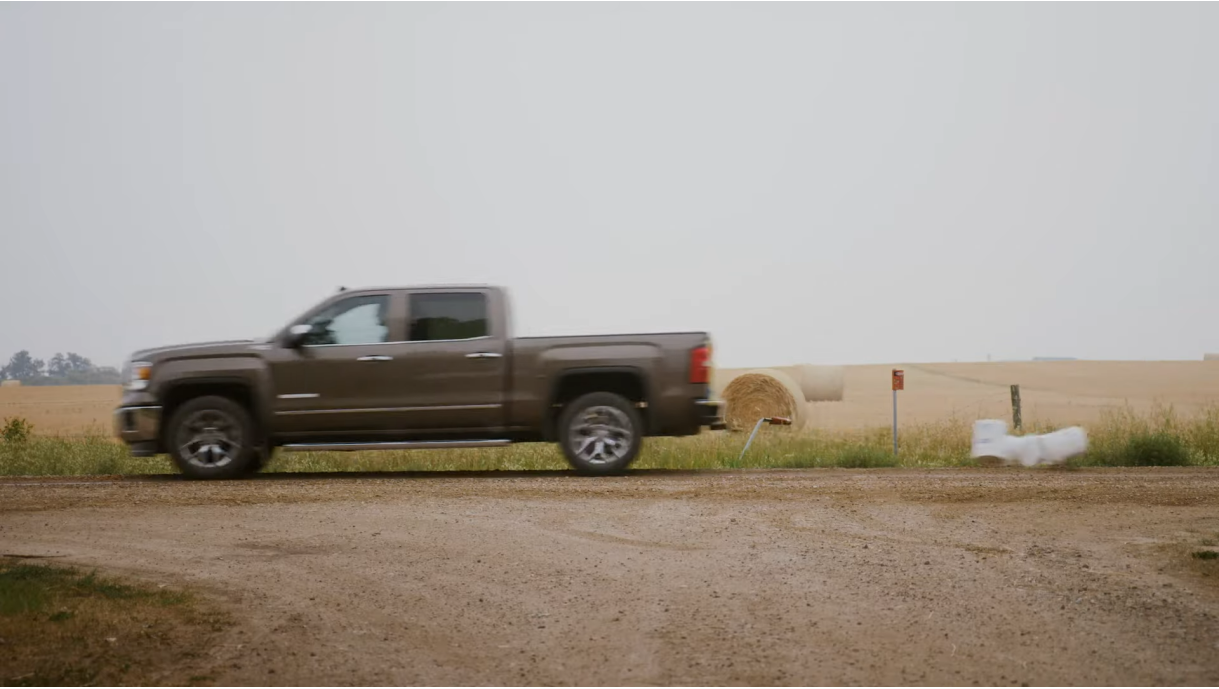
Will it Shatter – Just Harvested
InVigor hybrid canola from BASF developed its very own patented Pod Shatter Reduction technology and introduced it to growers in 2014. The trait has been trusted to safely retain the seeds in the pod and help preserve yield potential on over 40 million acres. The patented Pod Shatter Reduction trait strengthens both pod seams and stems to give the plants excellent pod shatter reduction characteristics and safely retain the seeds in the pod until you are ready to harvest. We ask our very own patented technology “Will it Shatter?” with this out of the box (but inside the bucket) ideas. See how our patented Pod Shatter Reduction technology performs in this video.
PODcast
Throw on our Canola PODcasts while you sip your morning coffee or roll through your fields for insights on canola you don’t want to miss.
FAQ
What is Modalex?
For 2026, Modalex™ seed treatment is the new base treatment for InVigor canola hybrids. Modalex replaces thiamethoxam with clothianidin, which has been applied across millions of acres in Western Canada. Modalex is backed by extensive field research and experience and delivers the flexibility to select additional top seed treatments tailored to your specific pest challenges.
Talk to your retailer early about your seed treatment needs to secure solutions for your farm. |
Regarding InVigor® hybrid canola, does the seeding rate recommendation change with bags treated with LumidermTM seed treatment?
| For InVigor® hybrid canola, the seeding rate does not change when treated with LumidermTM seed treatment. The addition of LumidermTM seed treatment is an optional seed treatment a grower can select for additional protection against cutworms or flea beetles. LumidermTM seed treatment is applied at a standard rate across all thousand seed weights (TSW). |
For InVigor® hybrid canola, how is seed size measured? Is it measured by thousand seed weight?
| For InVigor® hybrid canola, seed size is measured according to industry standard. The seed industry measures average lot seed size by measuring the weight in grams of 1000 seeds, which is called thousand seed weight (TSW). |
In regard to canola seed, why does BASF use thousand seed weight (TSW) versus thousand kernel weight (TKW)?
| BASF uses thousand seed weight (TSW) for canola seed. TKW stands for thousand kernel weight, which is measured in grams and is a standard within the Canadian Food Inspection Agency for other crops. Since canola is not a kernel, the common term used is TSW or thousand seed weight. |
Regarding InVigor® hybrid canola, what is the difference between the thousand seed weight (TSW) on the tag and the TSW range on the bag?
| For InVigor® hybrid canola, every canola seed lot that is processed is assigned a thousand seed weight (TSW), which represents the average seed size of that lot. The TSW indicated on the seed tag is the actual TSW of the lot and aligns with the InVigor seed packaging range, identified by one of the 4 bag ranges (A, B, C or D). |
For InVigor® hybrid canola, is thousand seed weight (TSW) measured prior to seed treating or after?
| The thousand seed weight (TSW) of any given InVigor® hybrid canola seed lot is measured before any seed additive or treatment occurs. |
Regarding InVigor® hybrid canola, does the addition of a seed treatment and/or biological seed treatment result in a bigger seed and does this affect seed size, weight and calibration?
| For InVigor® hybrid canola, the addition of seed treatments and/or biological seed treatments does not affect seed size, weight or calibration for seeding. The amount of product applied to a single seed is so low it does not significantly change the thousand seed weight (TSW), regardless of bare seed size. |
For InVigor® hybrid canola, does seed perform differently in terms of germination, vigour or yield when comparing the C and D ranges versus the A and B ranges?
| InVigor® hybrid canola research from the BASF Agronomic Excellence Team shows there is no difference in the emergence, vigour and yield performance of InVigor hybrid canola in seed size ranges A through D. There are several independent studies that support and show the same results as those observed by the Agronomic Excellence Team. |
Why does Neil Harker’s research suggest that bigger seed is better? Why are the results different from your findings?
| Dr. Neil Harker, research scientist from Agriculture & Agri-Food Canada, published a study on seed size, which supports the work done by the Agronomic Excellence Team, showing that there are no differences in the emergence and yield performance of hybrids based on thousand seed weights (TSW). Harker’s research concluded that there was a difference in the early-season biomass seed in the small fraction versus medium and large fractions from within one seed lot. Harker’s findings also illustrated that the difference in seed sizes did not lead to differences in canola emergence or yield. It is important to note that the methodology that Harker used was different than what the Agronomic Excellence Team used. Harker took one seed lot and separated the lot into different categories of seed size and conducted the trials on each category of seed sizes within the lot. The Agronomic Excellence Team used whole seed lots that were not fractioned into different sizes but measured based on the average TSW of the lot. However, the Agronomic Excellence Team has performed similar work with fractioned seed, which demonstrates that the smallest seeds within a seed lot have less vigour than the balance of the seed lot. This is similar to the findings of Harker’s research. It is important to keep in mind that every seed lot has a distribution of seed sizes within it and does not contain just one size. However, the seed in a bag of InVigor has no detectable difference in performance between a TSW of 4.0 and 5.9 grams. |
For InVigor® hybrid canola, how are the seeding rate recommendations determined?
| InVigor® hybrid canola seeding rate recommendations are calculated to result in an end plant population of 5 to 7 plants/ft². By seeding approximately 10 seeds/ft² and taking into consideration an average survivability of 60%, the grower should achieve 6 plants/ft² on average. It’s important to remember that results may vary on your farm due to environmental factors and preferred management practices. For best practice, growers should determine the survivability on each piece of land they farm to ensure they are achieving the desired 5 to 7 plants/ft². For example: Range “A” contains thousand seed weights (TSWs) between 4.0 g and 4.4 g. The seeding rate recommendation will be based on the 4.4 g TSW assuming a planting rate of about 10 seeds/ft², targeting 60% survivability with the goal of achieving 6 plants/ft². (Seeding rate (lb/ac) = (9.6 x 6 plants/ft² * 4.4 g)/60 = 4.2 lb/ac) |
When planting InVigor® hybrid canola based on the recommended seeding rates on the seed bag packaging, how do I calibrate for the seeding rate if my drill row spacing is wider or narrower than 12"?
| The BASF InVigor® hybrid canola target plant population research is based off 10 to 12" row spacing. The targeted plant population of 5 to 7 plants/ft² remains consistent regardless of row spacing. It is important to note that increased row spacing can affect other factors, such as delayed maturity and weed management if spacing becomes too wide. This is due to factors, such as seed bed utilization, that should be considered when planting for a successful canola crop. |
For InVigor® hybrid canola, does seeding with seed singulation equipment impact the suggested InVigor seeding rates or targeted plant population recommendation?
| Seeding your InVigor® hybrid canola seed with seed singulation equipment does not impact the suggested InVigor seeding rates or targeted plant population recommendations. The recommended plant population for InVigor is 5 to 7 plants/ft², regardless of how it is seeded. However, the survivability of the seed may be different using seed singulation planting methods. Please contact your seeder manufacturer for accurate calibration instructions. |
How many seeds are in each bag of InVigor® hybrid canola?
| InVigor® hybrid canola seed bags contain a minimum of 4.25 million seeds in each bag, regardless of the thousand seed weight (TSW) of the hybrid seed lot. |
How many seeds are in each mini bulk tote of InVigor® hybrid canola?
| InVigor® hybrid canola mini bulk totes of seed contain a minimum of 85 million seeds in each tote, regardless of the thousand seed weight (TSW) of the hybrid seed lot. |
How many acres can be seeded with a bag of InVigor® hybrid canola?
| Every bag of InVigor® hybrid canola is designed to seed 10 acres based on recommended target plant populations of 5 to 7 plants/ft² and recommended seeding rates. InVigor seed packaging will provide more consistency in the number of seeds in every bag and the predictability in the number of acres that can be seeded with every bag of InVigor. Because every bag will contain a minimum of 4.25 million seeds, regardless of the thousand seed weight, you’ll notice a difference in the size and weight of a range “A” bag (smaller) compared to a range “D” bag (larger), but the minimum amount of seed in each, remains the same. |
How do I identify which range (A through D) my InVigor® hybrid canola has?
| You can now identify the range your InVigor® hybrid canola is by looking for the letter (A, B, C or D) printed on the sides and front of the bag. With the seed range clearly printed, each bag of InVigor canola will also have recommended seeding rate charts printed on the back of the bag so you can adjust for your specific environmental or management practices. In addition, ranges for mini bulk totes will also be clearly identified in the same way. |
Will the InVigor® hybrid canola InVigor RATE thousand seed weight (TSW) ranges change from year to year?
| InVigor® hybrid canola seed bag ranges for InVigor RATE recommendations will not change from year to year. BASF plans to maintain four ranges (A, B, C and D) and keep these ranges consistent between 4.0 and 5.9 g TSWs. It is important to note that the ranges available from hybrid to hybrid will vary based on production from year to year. |
Will InVigor® hybrid canola bags provide a seeding rate recommendation in lbs/acre?
| InVigor® hybrid canola bags are recommended to seed 10 acres/bag based on seeding approximately 10 seeds/ft² with 60% survivability pre-calculated for you. All InVigor packages also have printed seeding recommendation charts in lbs/acre on the back of each hybrid bag. These charts will provide you quick recommendations so that your seeding rates may be adjusted for your specific seeding practices or environmental conditions. |
For InVigor® hybrid canola, what if a grower wants to fine tune their seeding rate based on the actual thousand seed weight (TSW) on the certified seed tag?
| On each bag of InVigor® hybrid canola, the actual TSW of each seed lot is printed on the seed tag. This will allow growers to calibrate specifically to the exact TSW and not the range listed should they choose to do so. In addition, seeding rates can also be adjusted based off of actual survivability of the field that the grower has determined. There are three charts on the back of every bag that a grower can use to further refine their seeding rate based off of 50%, 60% or 70% survivability. On each of the charts, the seeding rate can be further refined by choosing the desired plant stand of 5, 6 or 7 plants/ft². All charts will display the recommended BASF seeding rate, which assumes 60% survivability and a desired plant stand of 5 to 7 plants/ft². This seeding rate will also be displayed on the front of the bag. |
For InVigor® hybrid canola varieties, will growers be able to order by range?
| Unfortunately growers will not be able to order their InVigor® hybrid seed varieties by range. A variety of factors, such as genetics and environment, influence the thousand seed weight (TSW) of the seed lots available in a given year, which makes it impossible for BASF to predict the actual volumes of each range available. It is important to remember that BASF research has shown that the performance of our hybrids is consistent between ranges “A”, “B”, “C” or “D” when seeded to target 5 to 7 plants/ft² – so there is no need to seek out specific TSW ranges. |
How does InVigor® RATE packaging affect storage and stacking of pallets for InVigor hybrid canola?
| InVigor® RATE packaging of InVigor hybrid canola will not change the total number of bags of seed per pallet. Due to the different ranges and weights associated with InVigor RATE packaging, ranges A, B, C and D weights and dimensions will be different. However, the footprint each pallet consumes will be identical and pallets can still be stacked two high. |
What effect will InVigor® RATE have on my InVigor hybrid canola seed costs?
| There will not be a price difference based on each range of InVigor® hybrid canola based on thousand seed weight (TSW). The performance is equal among all the ranges, so there will be no price difference between different ranges. |
Will there be price differences based on each range of InVigor® hybrid canola thousand seed weight (TSW)?
| No, there will be no difference in price based on range. The performance is equal among all the ranges so there will be no price difference between different ranges. |
Does a grower need a specific thousand seed weight (TSW) on their InVigor® hybrid canola to seed with a planter?
| Seeding InVigor® hybrid canola with a planter does not require a specific thousand seed weight (TSW) within the InVigor bag ranges. Current planters have been developed for corn and soybeans and many have not been optimized to seed canola. The disk and size of the disk holes need to be considered when seeding canola with a planter. Having consistent seed size within the seed lot ensures the correct number of seeds are being planted. Each lot of seed contains a distribution of seed sizes within it, with the labeled TSW being the average seed size across the lot. This practice is used across all canola seed lots on the market today. Generally, the less variation in seed size within the lot, the more suitable it will be for planters. BASF has incorporated conditioning processes to reduce the amount of variability within a seed lot. Seed conditioning is a multistep process involving seed separation by size, shape and density. BASF has refined their conditioning process to target seeds that do not perform as consistently as other seed within the lot. Conditioning of InVigor hybrid canola seed largely removes the majority of the underperforming seeds from the lot. The performance of the planter in relation to a specific TSW can’t be predicted without testing. |
When it comes to InVigor® hybrid canola, is bigger seed better?
| Bigger seed does not mean better seed when it comes to InVigor® hybrid canola.The seed in a bag of InVigor has no detectable difference in performance between a thousand seed weight (TSW) of 4.0 and 5.9 grams. |
When it comes to InVigor® hybrid canola, does a grower need to plant 10 canola seeds/ft²?
| When planting InVigor® hybrid canola, planting 10 seeds/ft² is a general recommendation based on the average emergence of plants being 50 to 70% when seeded with an air drill. Many factors can influence seed emergence and using a planter does not impact emergence to the same extent as soil moisture and residue management. Precise control of seed depth into available moisture combined with effective on-row packing can increase emergence. If you combine singulation, precise control of depth and effective seed placement under ideal environmental conditions (ideal moisture and warm soil temperature), you can reduce your seeding rate. However, you should be targeting the same number of established plants (5 to 7 plants/ft²). If a grower seeds at 10 seeds/ft² and produces 6 plants/ft², this is 60% survivability. If seeding with a planter increases survivability by 15%, moving survivability to 75%, then they can reduce the number of seeds that they are seeding by 2 to 8 seeds/ft². |
In canola, what is the relationship between row spacing and its effect on plant population within the row?
| In canola, the relationship between row spacing and its effect on plant population within the row should have the following considerations. When comparing a narrow row (10”) to a wide row (20”), BASF research on InVigor® hybrid canola shows that there isn’t an advantage to reducing the number of plants per square foot. The lowest yielding combination from our trials have been with wide rows and low seeding rates. The conventional thinking is that if a grower doubles the row spacing, they can reduce the seeding rate by half, but our data suggests targeting 5 to 7 plants/ft² still delivers the highest yield, regardless of the row spacing. |
What is InVigor® RATE?
| InVigor® RATE is a targeted plant population (TPP) recommendation supported by seed-count packaging to help improve both the performance and consistency of InVigor hybrid canola. |
What are the agronomics behind InVigor® RATE?
| Seeding rates of 10 canola seeds/ft² equates to 5 to 7 plants/ft² for InVigor® hybrid canola with the following methodology. BASF Agronomic Excellence team found that in Western Canada, the average survivability of InVigor hybrid canola is approximately 50 to 70%. By seeding approximately 10 seeds/ft², and assuming an average survivability rate of 50 to 70%, this will produce 5 to 7 plants/ft². There is a lot of agronomic research behind InVigor® RATE. The BASF Agronomic Excellence team was established to provide the best agronomic recommendations for growing InVigor, which helps growers take their InVigor hybrids to the next level. (a) Years of research by the Agronomic Excellence team from BASF shows that the optimal target plant population to maximize yield, agronomic performance and consistency of InVigor hybrid canola is 5 to 7 plants/ft². (b)The average survivability of InVigor canola across Western Canada is 50 to 70%. In order to achieve the TPP of 5 to 7 plants/ft², growers will need to account for the thousand seed weight (TSW) of their seed when seeding InVigor hybrid canola and seed at the recommended seeding rate for the TSW range they are seeding. Growers will need to calibrate their drill for each range in order to achieve the recommended seeding rates. |
How does a seeding rate of 10 canola seeds/ft² equate to 5 to 7 plants/ft² for InVigor® hybrid canola?
| Seeding rates of 10 canola seeds/ft² equates to 5 to 7 plants/ft² for InVigor® hybrid canola with the following methodology. BASF Agronomic Excellence team found that in Western Canada, the average survivability of InVigor hybrid canola is approximately 50 to 70%. By seeding approximately 10 seeds/ft², and assuming an average survivability rate of 50 to 70%, this will produce 5 to 7 plants/ft². |
Why did BASF introduce InVigor® RATE?
| BASF introduced InVigor® RATE with the desire that every customer has a great experience growing InVigor. By seeding InVigor at the optimal plant population of 5 to 7 plants/ft², growers will be able to maximize the genetic potential of each InVigor hybrid. |
Do canola seed treatments and additives perform differently on larger versus smaller canola seeds?
| Canola seed treatments and/or additives do not perform differently on larger versus smaller canola seeds. The range of thousand seed weights (TSW) present in InVigor® hybrid canola packaging do not differ enough to result in any agronomic performance differences. |
Are there benefits from straight cutting canola over swathing canola?
| In BASF InVigor® DST trials, we observed a 5.4% yield increase in InVigor L233P being straight cut over the same hybrid being swathed. Growers discovered better use of manpower or greater efficiency and they can spread-out their harvest. According to growers who advocate for straight cutting, they also had higher yields by allowing the crop to mature longer. |
What clubroot pathotypes is InVigor® L343PC resistant to? Where should it be grown?
| InVigor L343PC is resistant to the predominant pathotypes present across Western Canada, plus additional recent newer pathotypes that were tested against at the time of registration. However, the nomenclature around clubroot pathotyping continues to evolve as the science and detection methods advance. Due to this uncertainty, there is real risk that what we believe is a particular pathotype today may actually be a population of multiple pathotypes that we have yet to understand. Our second-generation hybrids have been tested and is resistant against a wide range of clubroot pathotypes, including many of the new pathotypes that have been identified, and we are confident that InVigor L343PC is effective against most of these new and emerging pathotypes. In fields where first-generation hybrids cannot be grown due to the shifting pathotypes, InVigor L343PC can be used as it will perform better due to additional efficacy against some of the new pathotypes. InVigor L343PC is a good option in areas where clubroot has been a problem for several years and a grower has used first-generation hybrids for two cycles OR until clubroot symptoms appear – whichever comes first. |
What is a first-generation versus second-generation clubroot hybrid?
| First-generation InVigor® canola hybrids contain resistance genetics that were initially deployed to combat clubroot. This includes InVigor Health L358HPC, InVigor L356PC, InVigor L340PC, and L345PC. They were designed to control the predominant pathotypes in Western Canada at the time of their registration. Second-generation hybrids contain additional sources of resistance designed with multiple genes so that they are effective against a wider range of pathotypes. |
If concerned about clubroot but there is no confirmed clubroot in your farming community, is growing an InVigor® clubroot-resistant hybrid still the best choice?
| When you have not identified clubroot infection in your community but you are concerned about clubroot, you still have hybrid options to consider. In this case consider growing the InVigor® canola hybrid that best meets your needs for yield potential and agronomic characteristics (either non-clubroot resistant or first-generation clubroot resistant). Remember to keep scouting for clubroot on your farm and utilize good IPM strategies, regardless of your hybrid choice. Ultimately the goal is to keep spore numbers low. |
Other companies are labeling the clubroot pathotypes their hybrids are resistant to. What is BASF’s response to this approach?
| In response to some seed companies labeling for clubroot pathotypes, the science and nomenclature are evolving and we continue to learn about clubroot population dynamics. Clubroot pathotypes within populations are diverse and can be highly variable within a field. Generalizations about predominant pathotypes can lead to poor field performance. Furthermore, there are no current commercial testing facilities providing robust pathotyping for clubroot. As a result of these factors, you can view our current lineup and their respective pathotype resistance here, however BASF has chosen to not label our InVigor® canola hybrids on the packaging. |
What else can I do during the growing season to ensure a successful straight cut harvest in canola (from seeding to harvest)?
We have a few recommendations to help ensure a successful straight cut harvest for your canola crop.
|
InVigor in a Minute
Only have a minute to spare during a busy growing season? Don’t worry, we cover what you need to know in our InVigor in a Minute video series.

InVigor in a Minute - 2026 InVigor Hybrid Canola Lineup
Each season your goal is the same, to get the most from every canola acre, and in 2026, the InVigor hybrid canola lineup from BASF gives you more tools than ever to do just that. With a full range of early, mid and later maturing hybrids, including new InVigor L355PC, you can find the right fit for every field, growing zone and harvest strategy.

InVigor in a Minute – InVigor hybrid canola and Cotegra fungicide
When you choose InVigor hybrid canola, you’re investing in a product that doesn’t compromise. So isn’t it only right you protect it with a product that matches these values? InVigor hybrid canola and Cotegra fungicide is a pairing in performance.
InVigor Behind the Bag
There’s more behind every bag of InVigor with BASF. See how our dedication to innovation goes beyond high-performance genetics to help growers have a successful season.
PODcast
Throw on our Canola PODcasts while you sip your morning coffee or roll through your fields for insights on canola you don’t want to miss.
FAQ
What is Modalex?
For 2026, Modalex™ seed treatment is the new base treatment for InVigor canola hybrids. Modalex replaces thiamethoxam with clothianidin, which has been applied across millions of acres in Western Canada. Modalex is backed by extensive field research and experience and delivers the flexibility to select additional top seed treatments tailored to your specific pest challenges.
Talk to your retailer early about your seed treatment needs to secure solutions for your farm. |
Regarding InVigor® hybrid canola, does the seeding rate recommendation change with bags treated with LumidermTM seed treatment?
| For InVigor® hybrid canola, the seeding rate does not change when treated with LumidermTM seed treatment. The addition of LumidermTM seed treatment is an optional seed treatment a grower can select for additional protection against cutworms or flea beetles. LumidermTM seed treatment is applied at a standard rate across all thousand seed weights (TSW). |
For InVigor® hybrid canola, how is seed size measured? Is it measured by thousand seed weight?
| For InVigor® hybrid canola, seed size is measured according to industry standard. The seed industry measures average lot seed size by measuring the weight in grams of 1000 seeds, which is called thousand seed weight (TSW). |
In regard to canola seed, why does BASF use thousand seed weight (TSW) versus thousand kernel weight (TKW)?
| BASF uses thousand seed weight (TSW) for canola seed. TKW stands for thousand kernel weight, which is measured in grams and is a standard within the Canadian Food Inspection Agency for other crops. Since canola is not a kernel, the common term used is TSW or thousand seed weight. |
Regarding InVigor® hybrid canola, what is the difference between the thousand seed weight (TSW) on the tag and the TSW range on the bag?
| For InVigor® hybrid canola, every canola seed lot that is processed is assigned a thousand seed weight (TSW), which represents the average seed size of that lot. The TSW indicated on the seed tag is the actual TSW of the lot and aligns with the InVigor seed packaging range, identified by one of the 4 bag ranges (A, B, C or D). |
For InVigor® hybrid canola, is thousand seed weight (TSW) measured prior to seed treating or after?
| The thousand seed weight (TSW) of any given InVigor® hybrid canola seed lot is measured before any seed additive or treatment occurs. |
Regarding InVigor® hybrid canola, does the addition of a seed treatment and/or biological seed treatment result in a bigger seed and does this affect seed size, weight and calibration?
| For InVigor® hybrid canola, the addition of seed treatments and/or biological seed treatments does not affect seed size, weight or calibration for seeding. The amount of product applied to a single seed is so low it does not significantly change the thousand seed weight (TSW), regardless of bare seed size. |
For InVigor® hybrid canola, does seed perform differently in terms of germination, vigour or yield when comparing the C and D ranges versus the A and B ranges?
| InVigor® hybrid canola research from the BASF Agronomic Excellence Team shows there is no difference in the emergence, vigour and yield performance of InVigor hybrid canola in seed size ranges A through D. There are several independent studies that support and show the same results as those observed by the Agronomic Excellence Team. |
Why does Neil Harker’s research suggest that bigger seed is better? Why are the results different from your findings?
| Dr. Neil Harker, research scientist from Agriculture & Agri-Food Canada, published a study on seed size, which supports the work done by the Agronomic Excellence Team, showing that there are no differences in the emergence and yield performance of hybrids based on thousand seed weights (TSW). Harker’s research concluded that there was a difference in the early-season biomass seed in the small fraction versus medium and large fractions from within one seed lot. Harker’s findings also illustrated that the difference in seed sizes did not lead to differences in canola emergence or yield. It is important to note that the methodology that Harker used was different than what the Agronomic Excellence Team used. Harker took one seed lot and separated the lot into different categories of seed size and conducted the trials on each category of seed sizes within the lot. The Agronomic Excellence Team used whole seed lots that were not fractioned into different sizes but measured based on the average TSW of the lot. However, the Agronomic Excellence Team has performed similar work with fractioned seed, which demonstrates that the smallest seeds within a seed lot have less vigour than the balance of the seed lot. This is similar to the findings of Harker’s research. It is important to keep in mind that every seed lot has a distribution of seed sizes within it and does not contain just one size. However, the seed in a bag of InVigor has no detectable difference in performance between a TSW of 4.0 and 5.9 grams. |
For InVigor® hybrid canola, how are the seeding rate recommendations determined?
| InVigor® hybrid canola seeding rate recommendations are calculated to result in an end plant population of 5 to 7 plants/ft². By seeding approximately 10 seeds/ft² and taking into consideration an average survivability of 60%, the grower should achieve 6 plants/ft² on average. It’s important to remember that results may vary on your farm due to environmental factors and preferred management practices. For best practice, growers should determine the survivability on each piece of land they farm to ensure they are achieving the desired 5 to 7 plants/ft². For example: Range “A” contains thousand seed weights (TSWs) between 4.0 g and 4.4 g. The seeding rate recommendation will be based on the 4.4 g TSW assuming a planting rate of about 10 seeds/ft², targeting 60% survivability with the goal of achieving 6 plants/ft². (Seeding rate (lb/ac) = (9.6 x 6 plants/ft² * 4.4 g)/60 = 4.2 lb/ac) |
When planting InVigor® hybrid canola based on the recommended seeding rates on the seed bag packaging, how do I calibrate for the seeding rate if my drill row spacing is wider or narrower than 12"?
| The BASF InVigor® hybrid canola target plant population research is based off 10 to 12" row spacing. The targeted plant population of 5 to 7 plants/ft² remains consistent regardless of row spacing. It is important to note that increased row spacing can affect other factors, such as delayed maturity and weed management if spacing becomes too wide. This is due to factors, such as seed bed utilization, that should be considered when planting for a successful canola crop. |
For InVigor® hybrid canola, does seeding with seed singulation equipment impact the suggested InVigor seeding rates or targeted plant population recommendation?
| Seeding your InVigor® hybrid canola seed with seed singulation equipment does not impact the suggested InVigor seeding rates or targeted plant population recommendations. The recommended plant population for InVigor is 5 to 7 plants/ft², regardless of how it is seeded. However, the survivability of the seed may be different using seed singulation planting methods. Please contact your seeder manufacturer for accurate calibration instructions. |
How many seeds are in each bag of InVigor® hybrid canola?
| InVigor® hybrid canola seed bags contain a minimum of 4.25 million seeds in each bag, regardless of the thousand seed weight (TSW) of the hybrid seed lot. |
How many seeds are in each mini bulk tote of InVigor® hybrid canola?
| InVigor® hybrid canola mini bulk totes of seed contain a minimum of 85 million seeds in each tote, regardless of the thousand seed weight (TSW) of the hybrid seed lot. |
How many acres can be seeded with a bag of InVigor® hybrid canola?
| Every bag of InVigor® hybrid canola is designed to seed 10 acres based on recommended target plant populations of 5 to 7 plants/ft² and recommended seeding rates. InVigor seed packaging will provide more consistency in the number of seeds in every bag and the predictability in the number of acres that can be seeded with every bag of InVigor. Because every bag will contain a minimum of 4.25 million seeds, regardless of the thousand seed weight, you’ll notice a difference in the size and weight of a range “A” bag (smaller) compared to a range “D” bag (larger), but the minimum amount of seed in each, remains the same. |
How do I identify which range (A through D) my InVigor® hybrid canola has?
| You can now identify the range your InVigor® hybrid canola is by looking for the letter (A, B, C or D) printed on the sides and front of the bag. With the seed range clearly printed, each bag of InVigor canola will also have recommended seeding rate charts printed on the back of the bag so you can adjust for your specific environmental or management practices. In addition, ranges for mini bulk totes will also be clearly identified in the same way. |
Will the InVigor® hybrid canola InVigor RATE thousand seed weight (TSW) ranges change from year to year?
| InVigor® hybrid canola seed bag ranges for InVigor RATE recommendations will not change from year to year. BASF plans to maintain four ranges (A, B, C and D) and keep these ranges consistent between 4.0 and 5.9 g TSWs. It is important to note that the ranges available from hybrid to hybrid will vary based on production from year to year. |
Will InVigor® hybrid canola bags provide a seeding rate recommendation in lbs/acre?
| InVigor® hybrid canola bags are recommended to seed 10 acres/bag based on seeding approximately 10 seeds/ft² with 60% survivability pre-calculated for you. All InVigor packages also have printed seeding recommendation charts in lbs/acre on the back of each hybrid bag. These charts will provide you quick recommendations so that your seeding rates may be adjusted for your specific seeding practices or environmental conditions. |
For InVigor® hybrid canola, what if a grower wants to fine tune their seeding rate based on the actual thousand seed weight (TSW) on the certified seed tag?
| On each bag of InVigor® hybrid canola, the actual TSW of each seed lot is printed on the seed tag. This will allow growers to calibrate specifically to the exact TSW and not the range listed should they choose to do so. In addition, seeding rates can also be adjusted based off of actual survivability of the field that the grower has determined. There are three charts on the back of every bag that a grower can use to further refine their seeding rate based off of 50%, 60% or 70% survivability. On each of the charts, the seeding rate can be further refined by choosing the desired plant stand of 5, 6 or 7 plants/ft². All charts will display the recommended BASF seeding rate, which assumes 60% survivability and a desired plant stand of 5 to 7 plants/ft². This seeding rate will also be displayed on the front of the bag. |
For InVigor® hybrid canola varieties, will growers be able to order by range?
| Unfortunately growers will not be able to order their InVigor® hybrid seed varieties by range. A variety of factors, such as genetics and environment, influence the thousand seed weight (TSW) of the seed lots available in a given year, which makes it impossible for BASF to predict the actual volumes of each range available. It is important to remember that BASF research has shown that the performance of our hybrids is consistent between ranges “A”, “B”, “C” or “D” when seeded to target 5 to 7 plants/ft² – so there is no need to seek out specific TSW ranges. |
How does InVigor® RATE packaging affect storage and stacking of pallets for InVigor hybrid canola?
| InVigor® RATE packaging of InVigor hybrid canola will not change the total number of bags of seed per pallet. Due to the different ranges and weights associated with InVigor RATE packaging, ranges A, B, C and D weights and dimensions will be different. However, the footprint each pallet consumes will be identical and pallets can still be stacked two high. |
What effect will InVigor® RATE have on my InVigor hybrid canola seed costs?
| There will not be a price difference based on each range of InVigor® hybrid canola based on thousand seed weight (TSW). The performance is equal among all the ranges, so there will be no price difference between different ranges. |
Will there be price differences based on each range of InVigor® hybrid canola thousand seed weight (TSW)?
| No, there will be no difference in price based on range. The performance is equal among all the ranges so there will be no price difference between different ranges. |
Does a grower need a specific thousand seed weight (TSW) on their InVigor® hybrid canola to seed with a planter?
| Seeding InVigor® hybrid canola with a planter does not require a specific thousand seed weight (TSW) within the InVigor bag ranges. Current planters have been developed for corn and soybeans and many have not been optimized to seed canola. The disk and size of the disk holes need to be considered when seeding canola with a planter. Having consistent seed size within the seed lot ensures the correct number of seeds are being planted. Each lot of seed contains a distribution of seed sizes within it, with the labeled TSW being the average seed size across the lot. This practice is used across all canola seed lots on the market today. Generally, the less variation in seed size within the lot, the more suitable it will be for planters. BASF has incorporated conditioning processes to reduce the amount of variability within a seed lot. Seed conditioning is a multistep process involving seed separation by size, shape and density. BASF has refined their conditioning process to target seeds that do not perform as consistently as other seed within the lot. Conditioning of InVigor hybrid canola seed largely removes the majority of the underperforming seeds from the lot. The performance of the planter in relation to a specific TSW can’t be predicted without testing. |
When it comes to InVigor® hybrid canola, is bigger seed better?
| Bigger seed does not mean better seed when it comes to InVigor® hybrid canola.The seed in a bag of InVigor has no detectable difference in performance between a thousand seed weight (TSW) of 4.0 and 5.9 grams. |
When it comes to InVigor® hybrid canola, does a grower need to plant 10 canola seeds/ft²?
| When planting InVigor® hybrid canola, planting 10 seeds/ft² is a general recommendation based on the average emergence of plants being 50 to 70% when seeded with an air drill. Many factors can influence seed emergence and using a planter does not impact emergence to the same extent as soil moisture and residue management. Precise control of seed depth into available moisture combined with effective on-row packing can increase emergence. If you combine singulation, precise control of depth and effective seed placement under ideal environmental conditions (ideal moisture and warm soil temperature), you can reduce your seeding rate. However, you should be targeting the same number of established plants (5 to 7 plants/ft²). If a grower seeds at 10 seeds/ft² and produces 6 plants/ft², this is 60% survivability. If seeding with a planter increases survivability by 15%, moving survivability to 75%, then they can reduce the number of seeds that they are seeding by 2 to 8 seeds/ft². |
In canola, what is the relationship between row spacing and its effect on plant population within the row?
| In canola, the relationship between row spacing and its effect on plant population within the row should have the following considerations. When comparing a narrow row (10”) to a wide row (20”), BASF research on InVigor® hybrid canola shows that there isn’t an advantage to reducing the number of plants per square foot. The lowest yielding combination from our trials have been with wide rows and low seeding rates. The conventional thinking is that if a grower doubles the row spacing, they can reduce the seeding rate by half, but our data suggests targeting 5 to 7 plants/ft² still delivers the highest yield, regardless of the row spacing. |
What is InVigor® RATE?
| InVigor® RATE is a targeted plant population (TPP) recommendation supported by seed-count packaging to help improve both the performance and consistency of InVigor hybrid canola. |
What are the agronomics behind InVigor® RATE?
| Seeding rates of 10 canola seeds/ft² equates to 5 to 7 plants/ft² for InVigor® hybrid canola with the following methodology. BASF Agronomic Excellence team found that in Western Canada, the average survivability of InVigor hybrid canola is approximately 50 to 70%. By seeding approximately 10 seeds/ft², and assuming an average survivability rate of 50 to 70%, this will produce 5 to 7 plants/ft². There is a lot of agronomic research behind InVigor® RATE. The BASF Agronomic Excellence team was established to provide the best agronomic recommendations for growing InVigor, which helps growers take their InVigor hybrids to the next level. (a) Years of research by the Agronomic Excellence team from BASF shows that the optimal target plant population to maximize yield, agronomic performance and consistency of InVigor hybrid canola is 5 to 7 plants/ft². (b)The average survivability of InVigor canola across Western Canada is 50 to 70%. In order to achieve the TPP of 5 to 7 plants/ft², growers will need to account for the thousand seed weight (TSW) of their seed when seeding InVigor hybrid canola and seed at the recommended seeding rate for the TSW range they are seeding. Growers will need to calibrate their drill for each range in order to achieve the recommended seeding rates. |
How does a seeding rate of 10 canola seeds/ft² equate to 5 to 7 plants/ft² for InVigor® hybrid canola?
| Seeding rates of 10 canola seeds/ft² equates to 5 to 7 plants/ft² for InVigor® hybrid canola with the following methodology. BASF Agronomic Excellence team found that in Western Canada, the average survivability of InVigor hybrid canola is approximately 50 to 70%. By seeding approximately 10 seeds/ft², and assuming an average survivability rate of 50 to 70%, this will produce 5 to 7 plants/ft². |
Why did BASF introduce InVigor® RATE?
| BASF introduced InVigor® RATE with the desire that every customer has a great experience growing InVigor. By seeding InVigor at the optimal plant population of 5 to 7 plants/ft², growers will be able to maximize the genetic potential of each InVigor hybrid. |
Do canola seed treatments and additives perform differently on larger versus smaller canola seeds?
| Canola seed treatments and/or additives do not perform differently on larger versus smaller canola seeds. The range of thousand seed weights (TSW) present in InVigor® hybrid canola packaging do not differ enough to result in any agronomic performance differences. |
Are there benefits from straight cutting canola over swathing canola?
| In BASF InVigor® DST trials, we observed a 5.4% yield increase in InVigor L233P being straight cut over the same hybrid being swathed. Growers discovered better use of manpower or greater efficiency and they can spread-out their harvest. According to growers who advocate for straight cutting, they also had higher yields by allowing the crop to mature longer. |
What clubroot pathotypes is InVigor® L343PC resistant to? Where should it be grown?
| InVigor L343PC is resistant to the predominant pathotypes present across Western Canada, plus additional recent newer pathotypes that were tested against at the time of registration. However, the nomenclature around clubroot pathotyping continues to evolve as the science and detection methods advance. Due to this uncertainty, there is real risk that what we believe is a particular pathotype today may actually be a population of multiple pathotypes that we have yet to understand. Our second-generation hybrids have been tested and is resistant against a wide range of clubroot pathotypes, including many of the new pathotypes that have been identified, and we are confident that InVigor L343PC is effective against most of these new and emerging pathotypes. In fields where first-generation hybrids cannot be grown due to the shifting pathotypes, InVigor L343PC can be used as it will perform better due to additional efficacy against some of the new pathotypes. InVigor L343PC is a good option in areas where clubroot has been a problem for several years and a grower has used first-generation hybrids for two cycles OR until clubroot symptoms appear – whichever comes first. |
What is a first-generation versus second-generation clubroot hybrid?
| First-generation InVigor® canola hybrids contain resistance genetics that were initially deployed to combat clubroot. This includes InVigor Health L358HPC, InVigor L356PC, InVigor L340PC, and L345PC. They were designed to control the predominant pathotypes in Western Canada at the time of their registration. Second-generation hybrids contain additional sources of resistance designed with multiple genes so that they are effective against a wider range of pathotypes. |
If concerned about clubroot but there is no confirmed clubroot in your farming community, is growing an InVigor® clubroot-resistant hybrid still the best choice?
| When you have not identified clubroot infection in your community but you are concerned about clubroot, you still have hybrid options to consider. In this case consider growing the InVigor® canola hybrid that best meets your needs for yield potential and agronomic characteristics (either non-clubroot resistant or first-generation clubroot resistant). Remember to keep scouting for clubroot on your farm and utilize good IPM strategies, regardless of your hybrid choice. Ultimately the goal is to keep spore numbers low. |
Other companies are labeling the clubroot pathotypes their hybrids are resistant to. What is BASF’s response to this approach?
| In response to some seed companies labeling for clubroot pathotypes, the science and nomenclature are evolving and we continue to learn about clubroot population dynamics. Clubroot pathotypes within populations are diverse and can be highly variable within a field. Generalizations about predominant pathotypes can lead to poor field performance. Furthermore, there are no current commercial testing facilities providing robust pathotyping for clubroot. As a result of these factors, you can view our current lineup and their respective pathotype resistance here, however BASF has chosen to not label our InVigor® canola hybrids on the packaging. |
What else can I do during the growing season to ensure a successful straight cut harvest in canola (from seeding to harvest)?
We have a few recommendations to help ensure a successful straight cut harvest for your canola crop.
|
